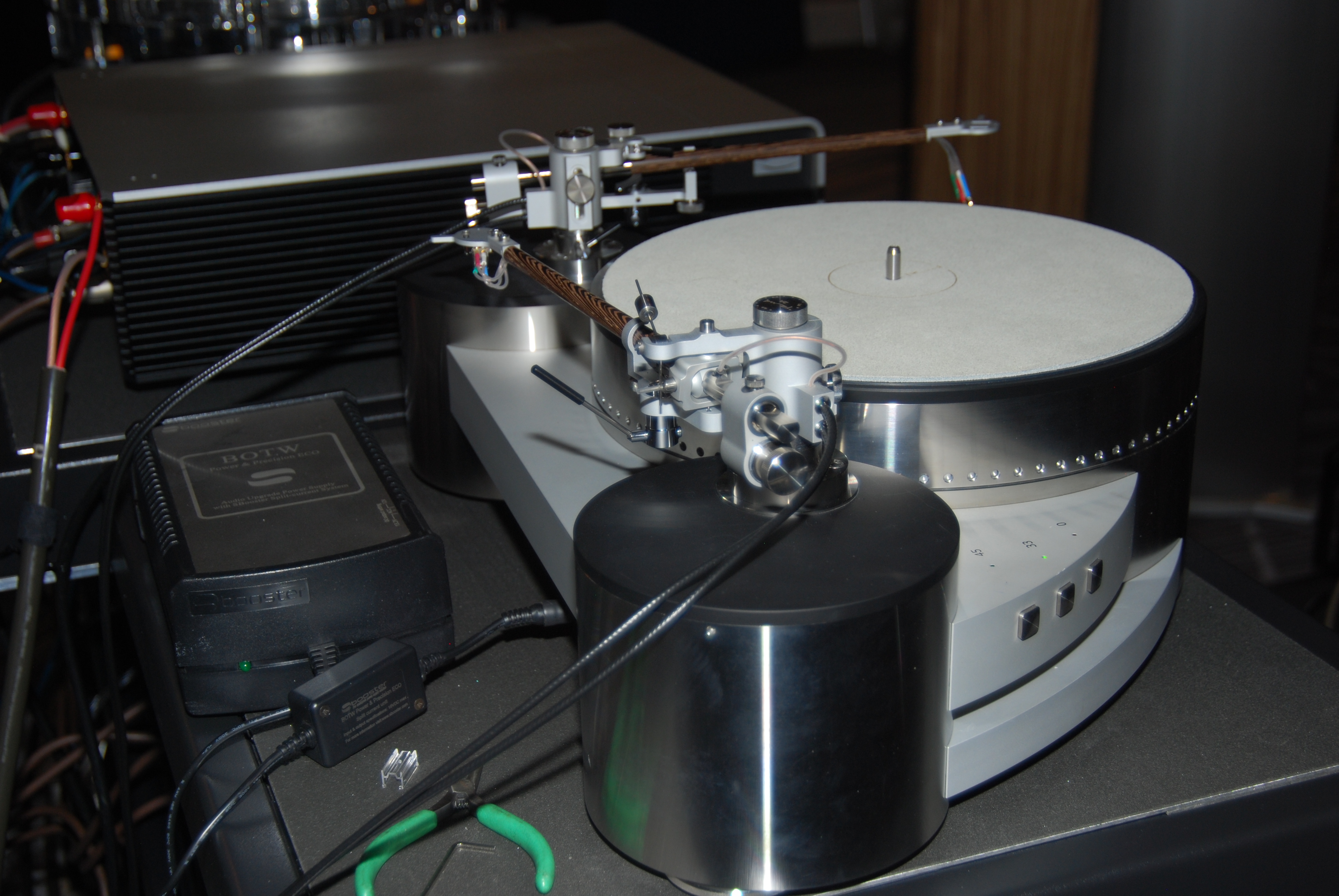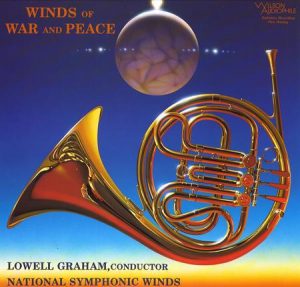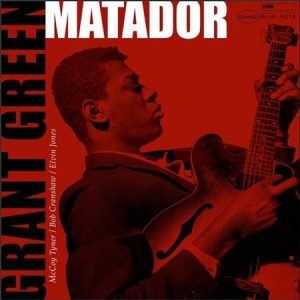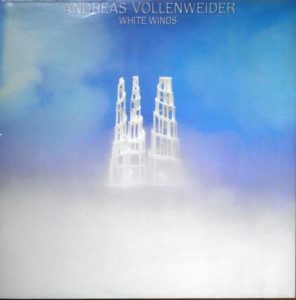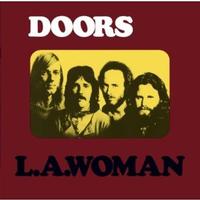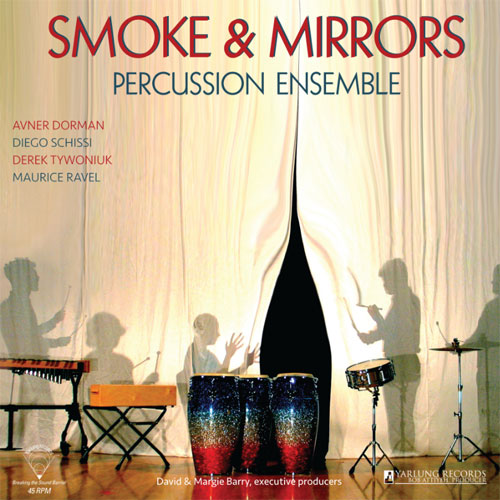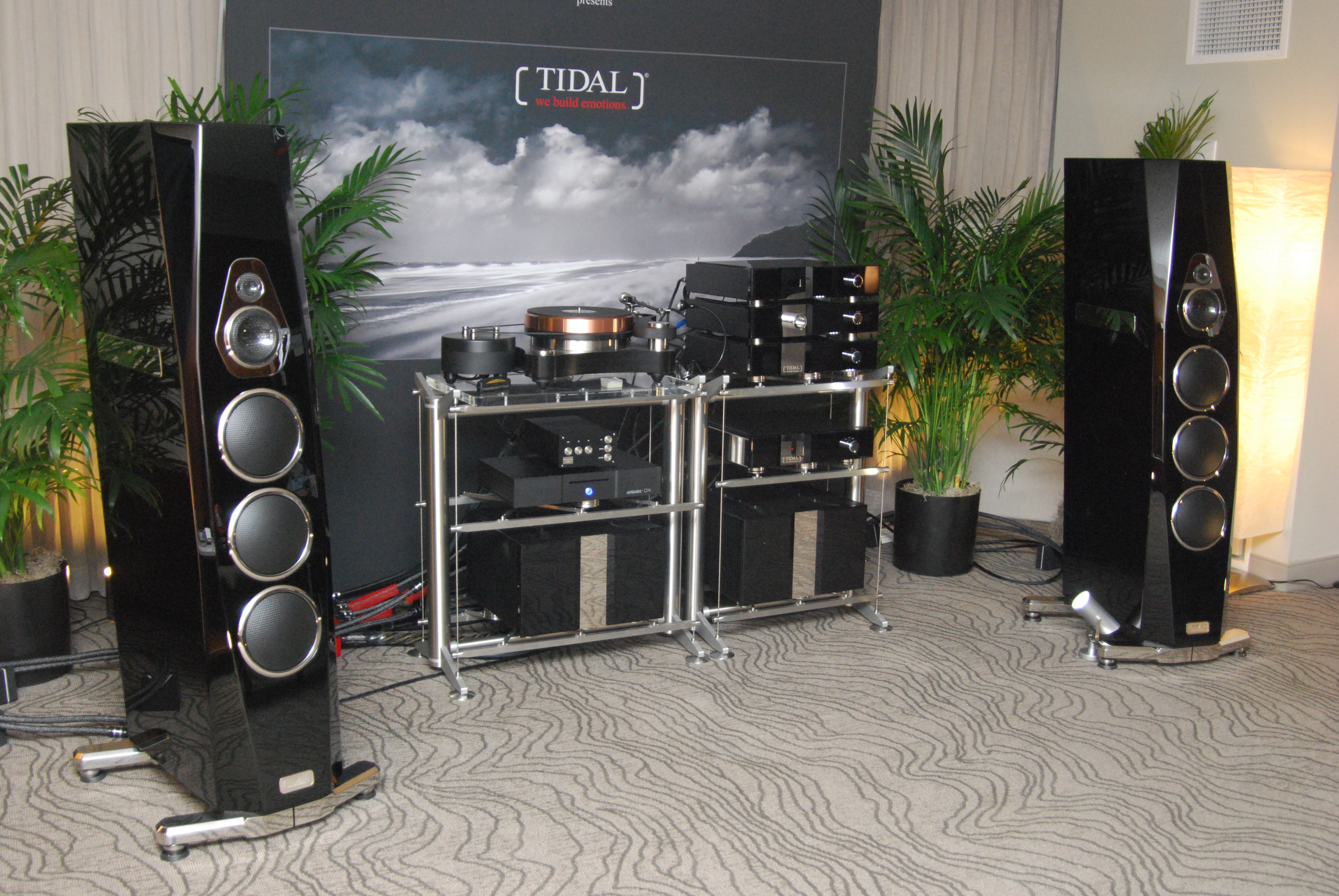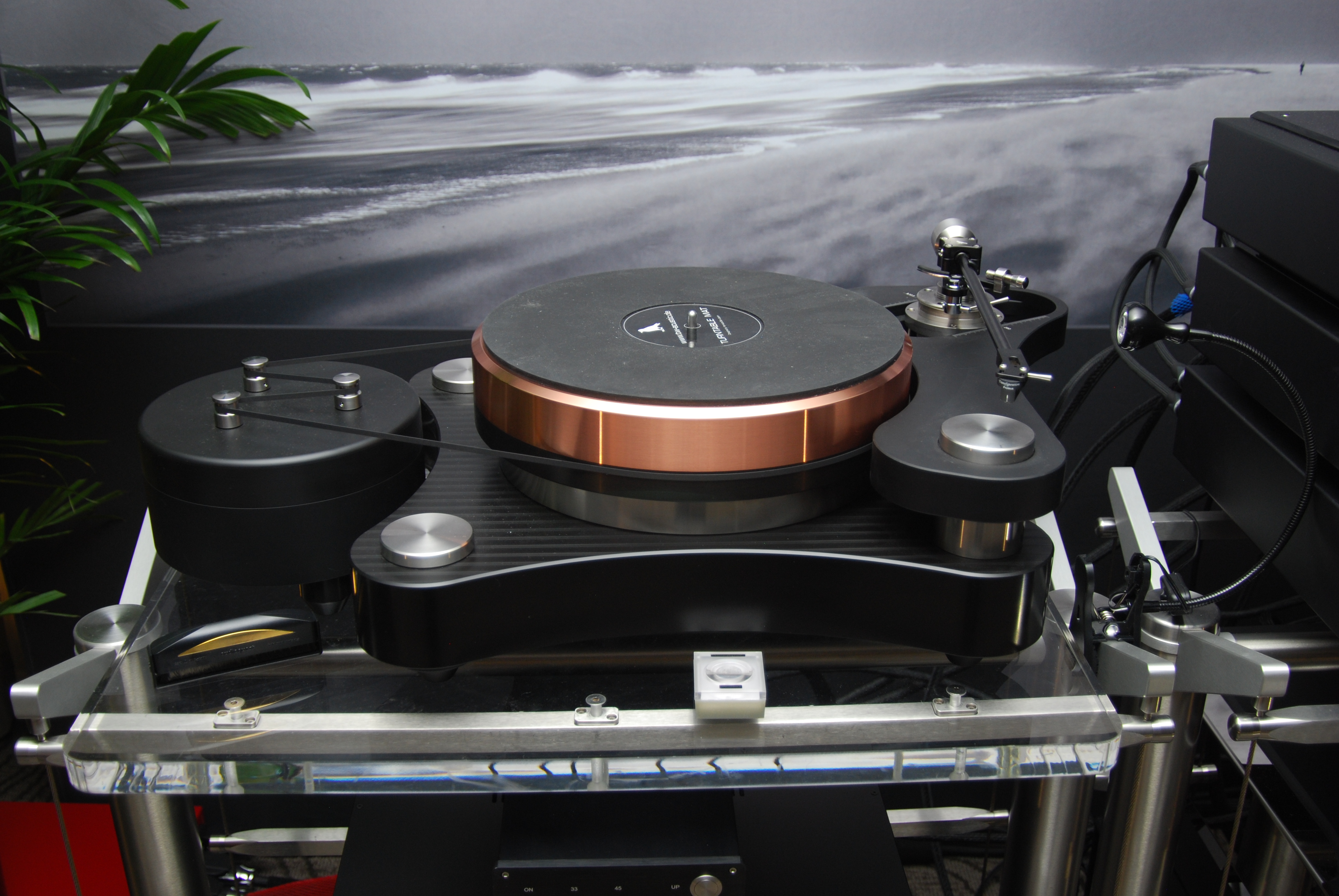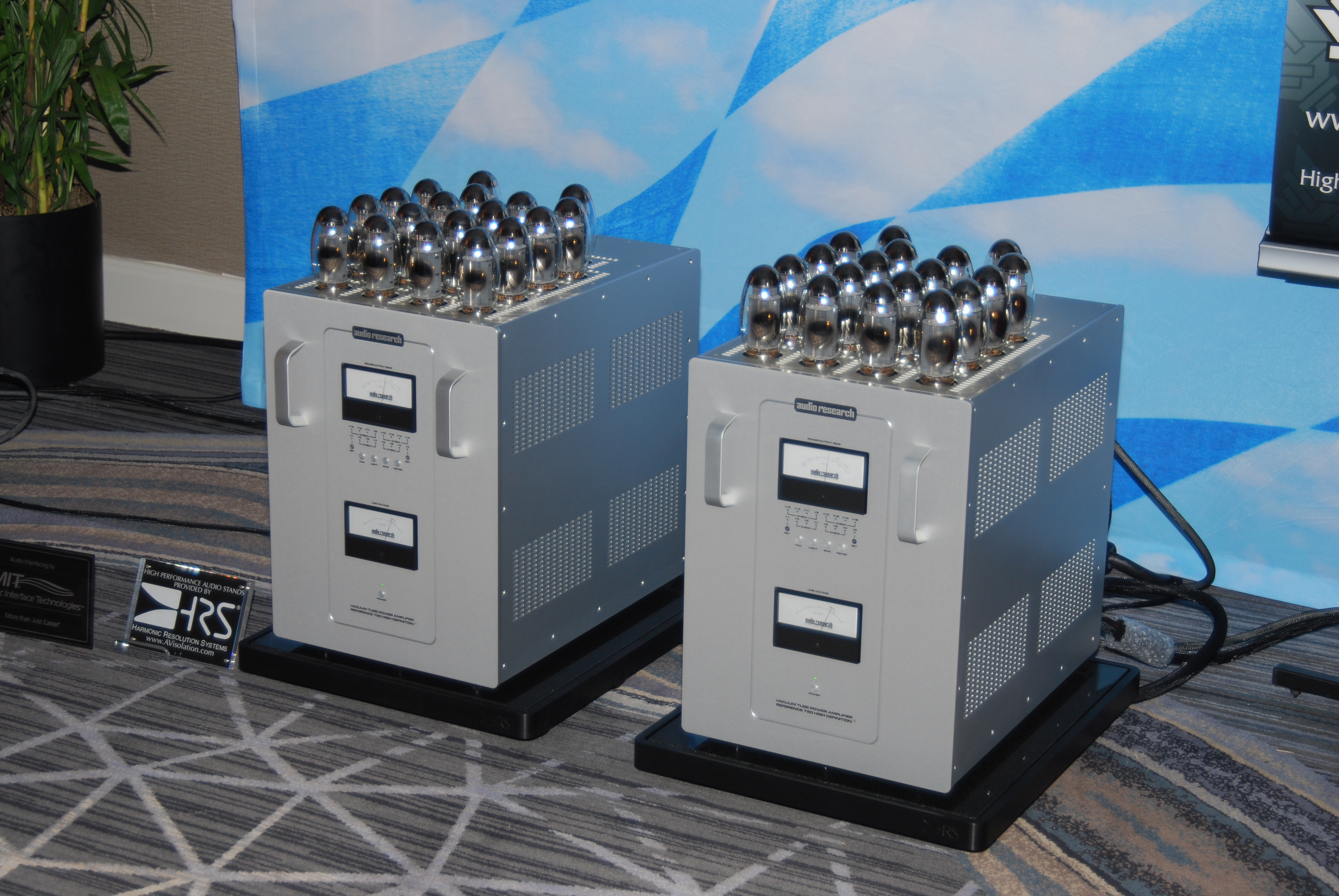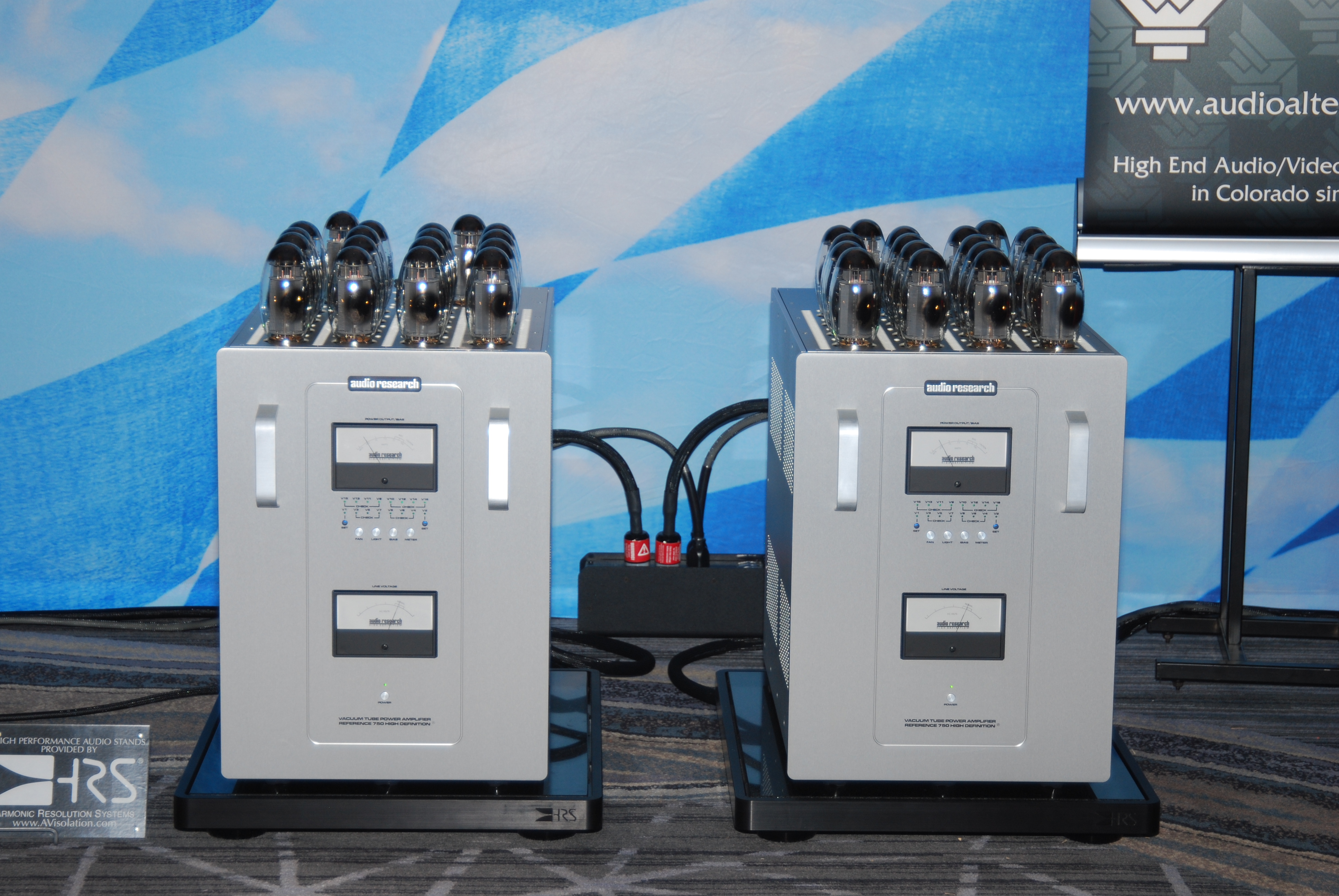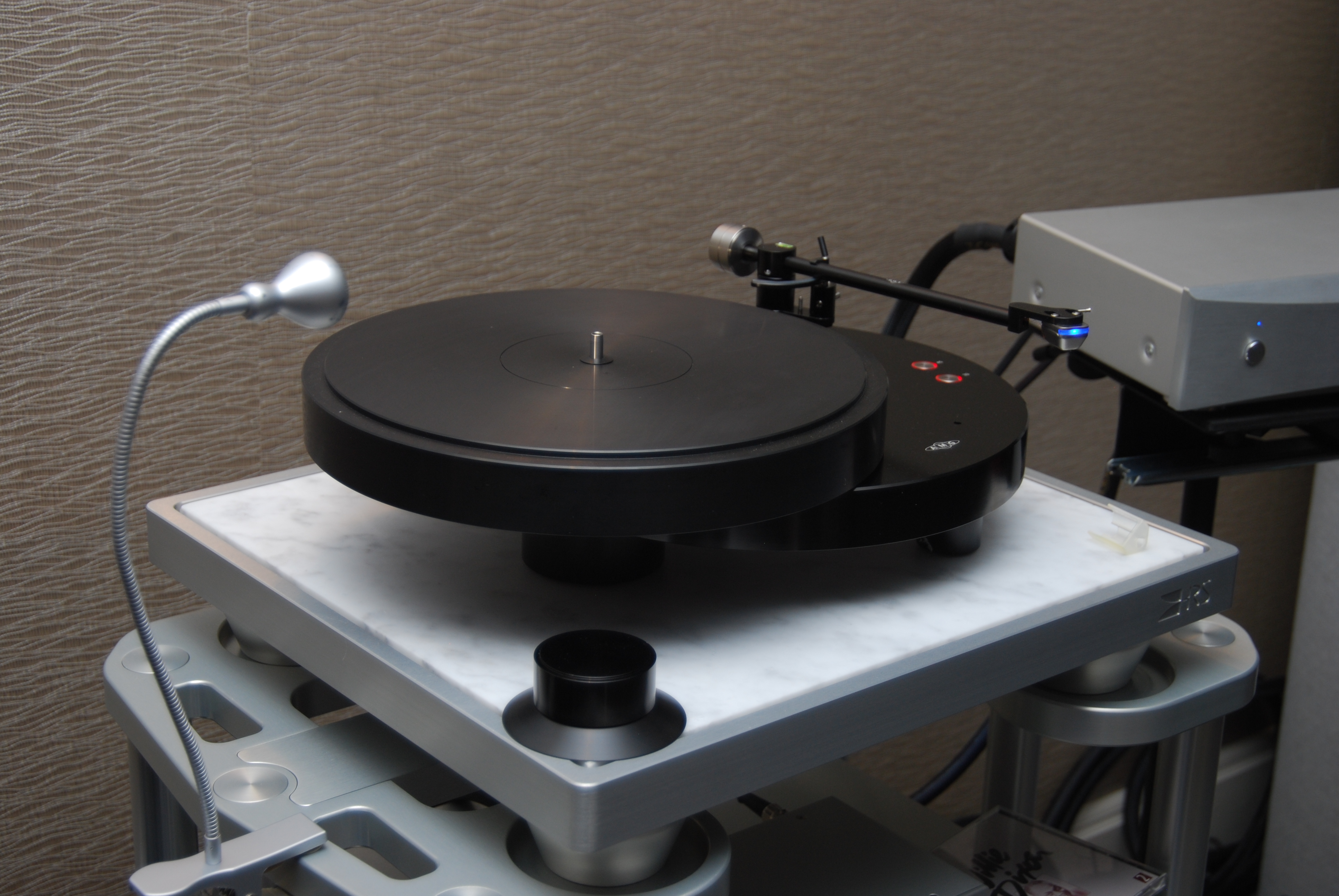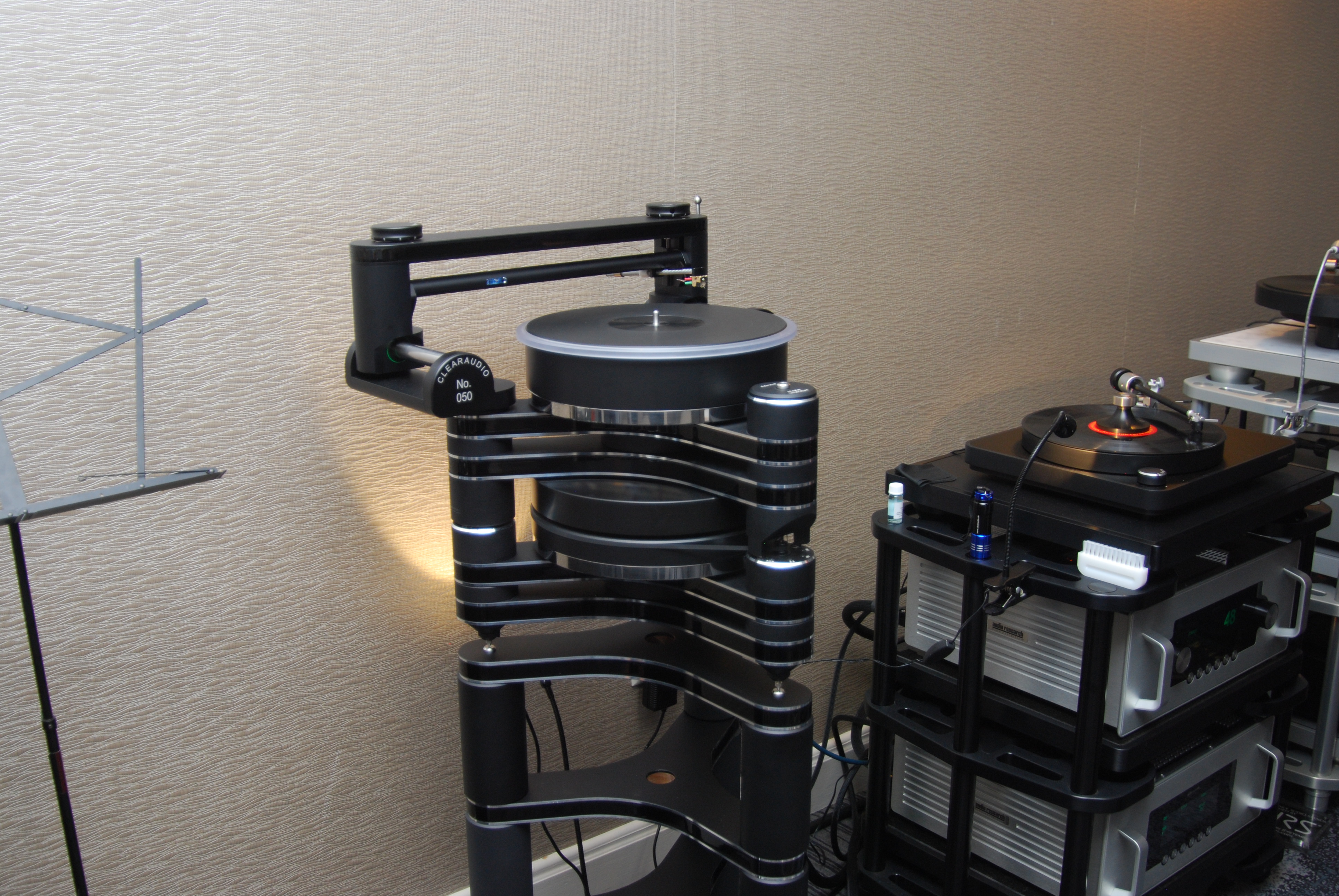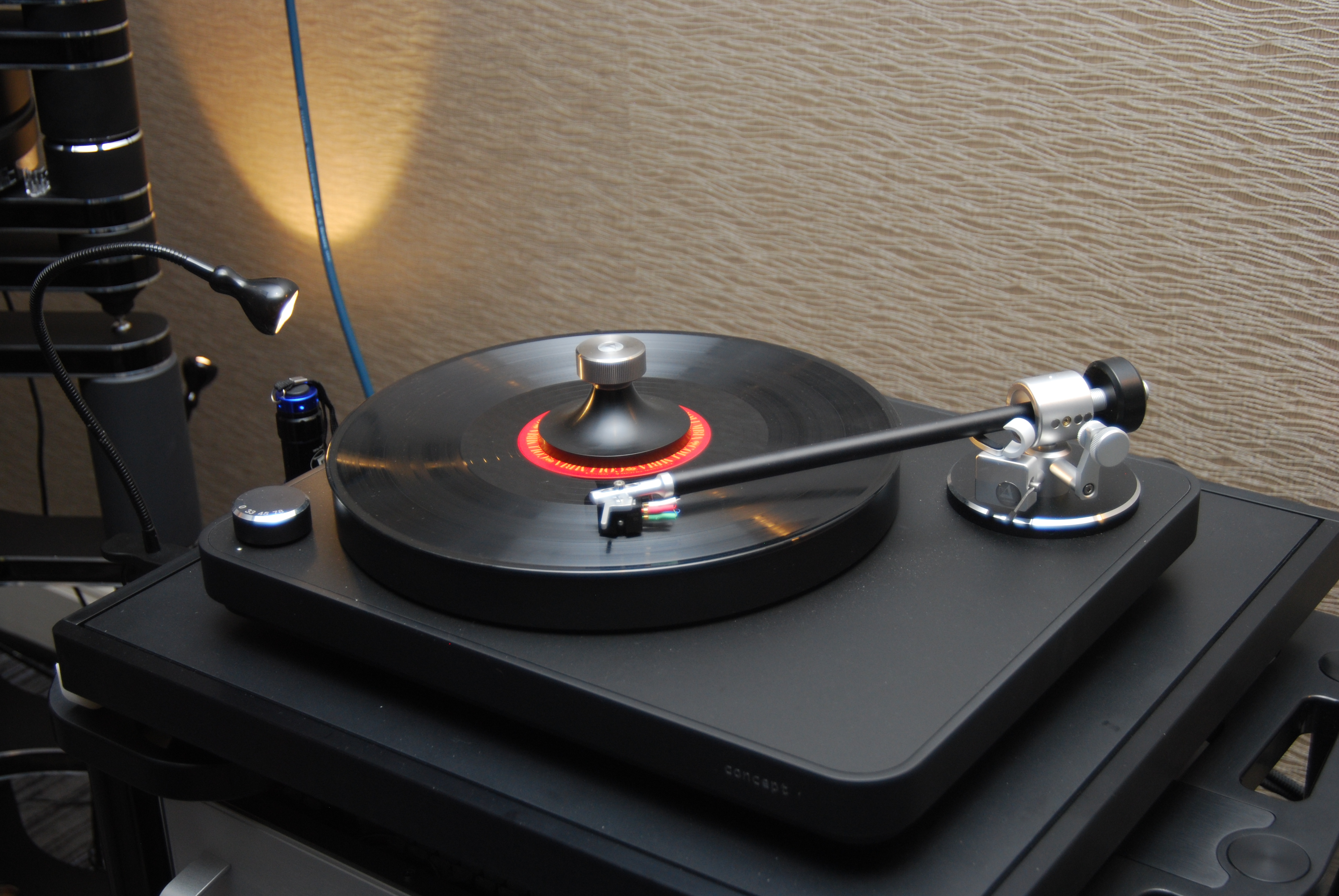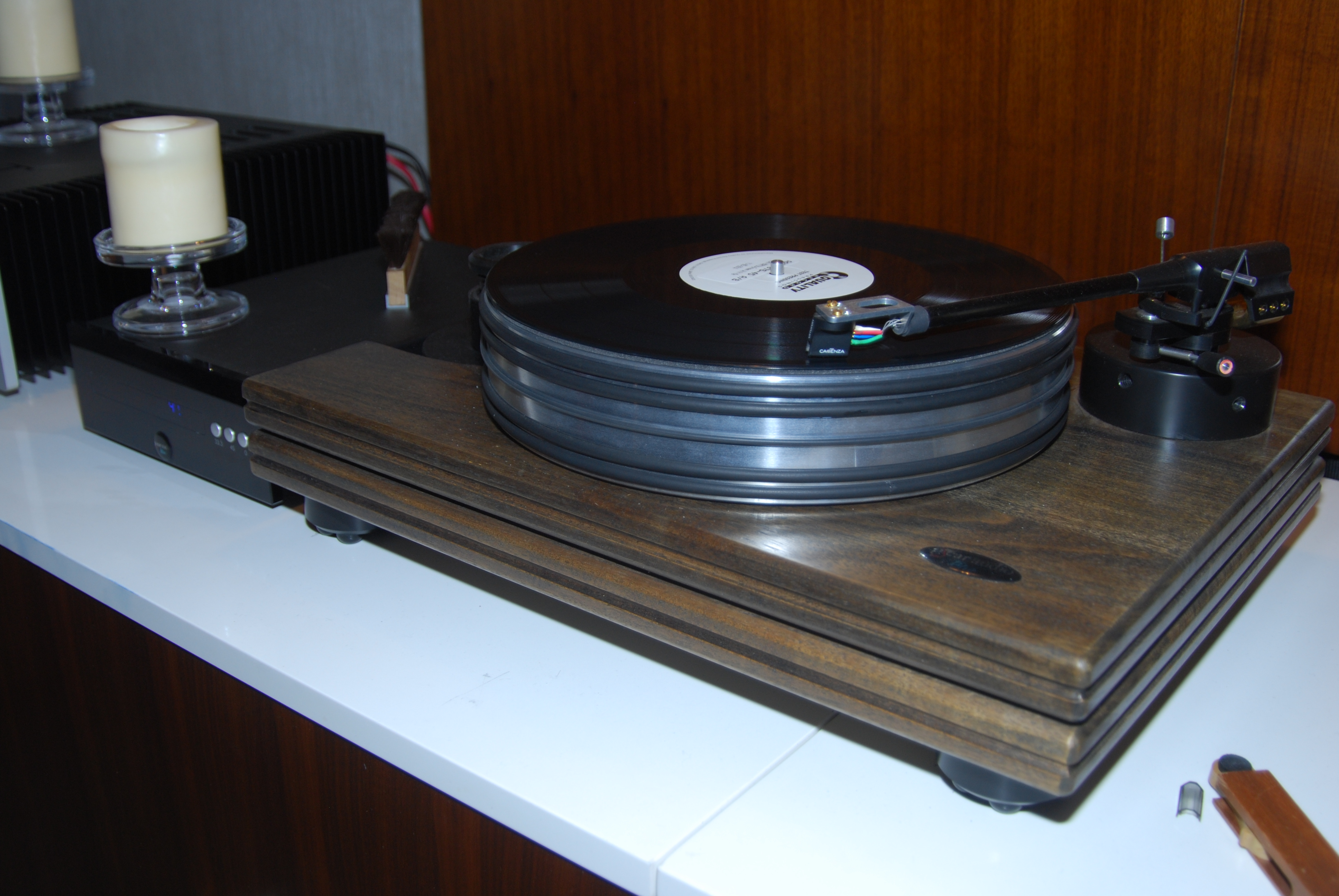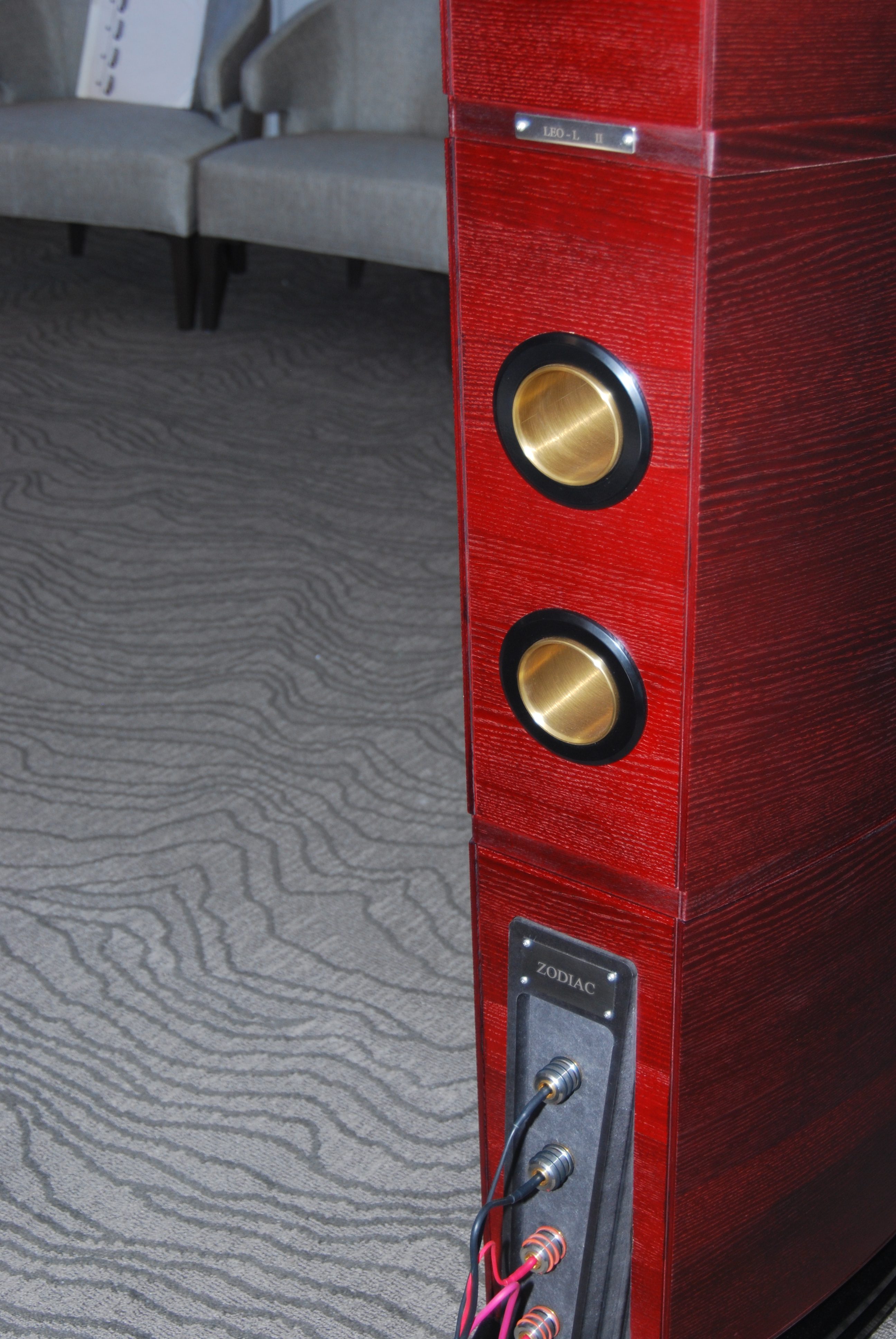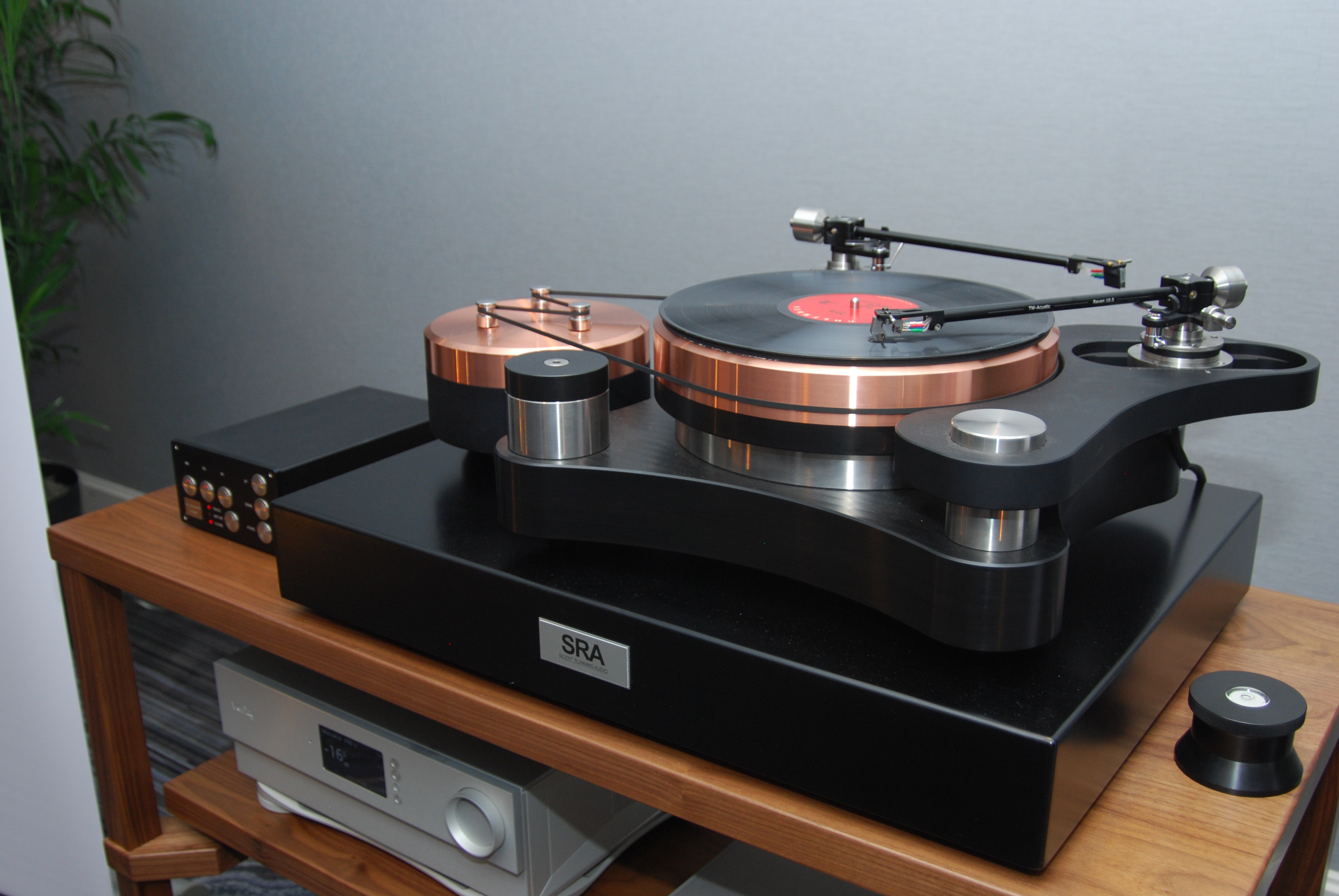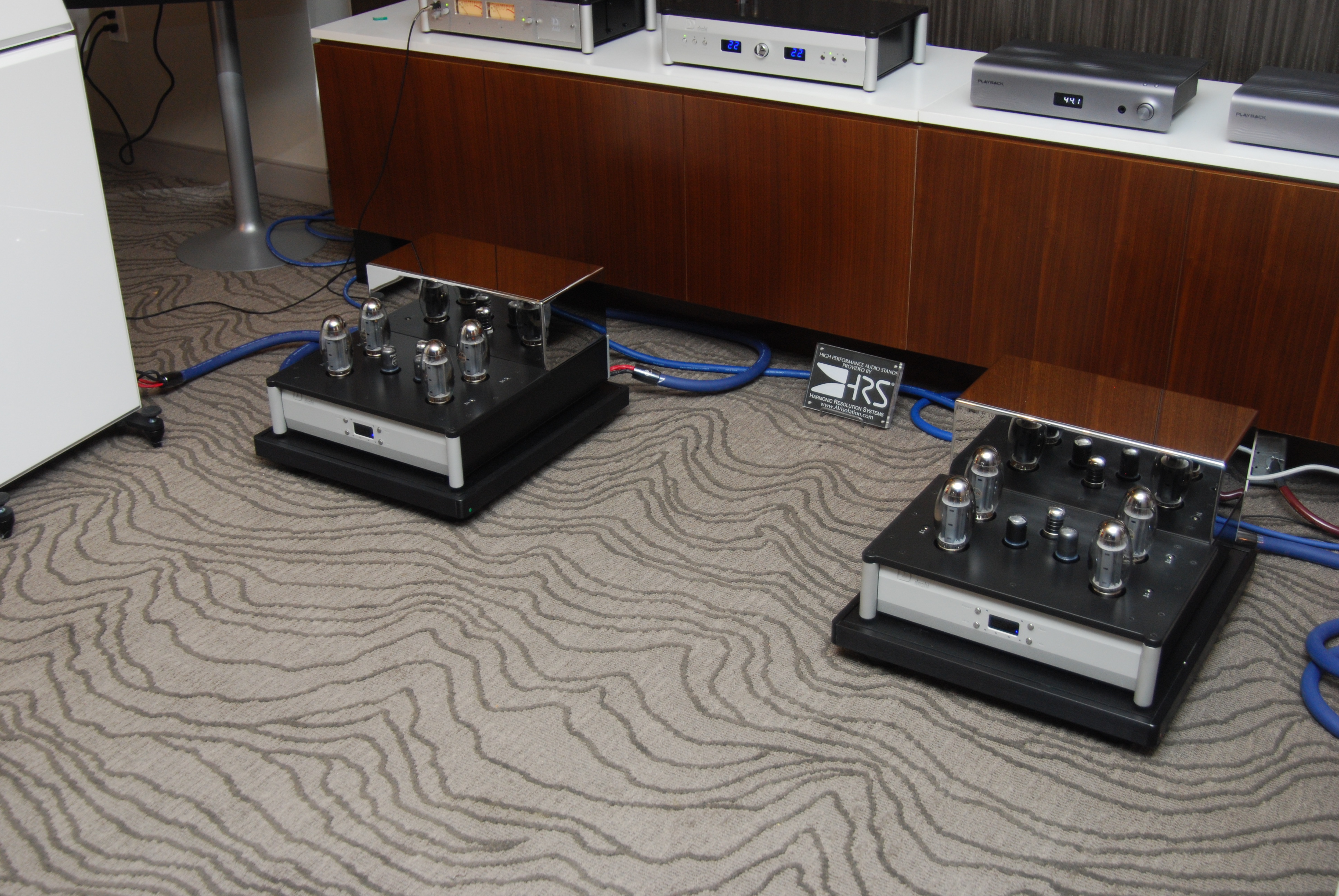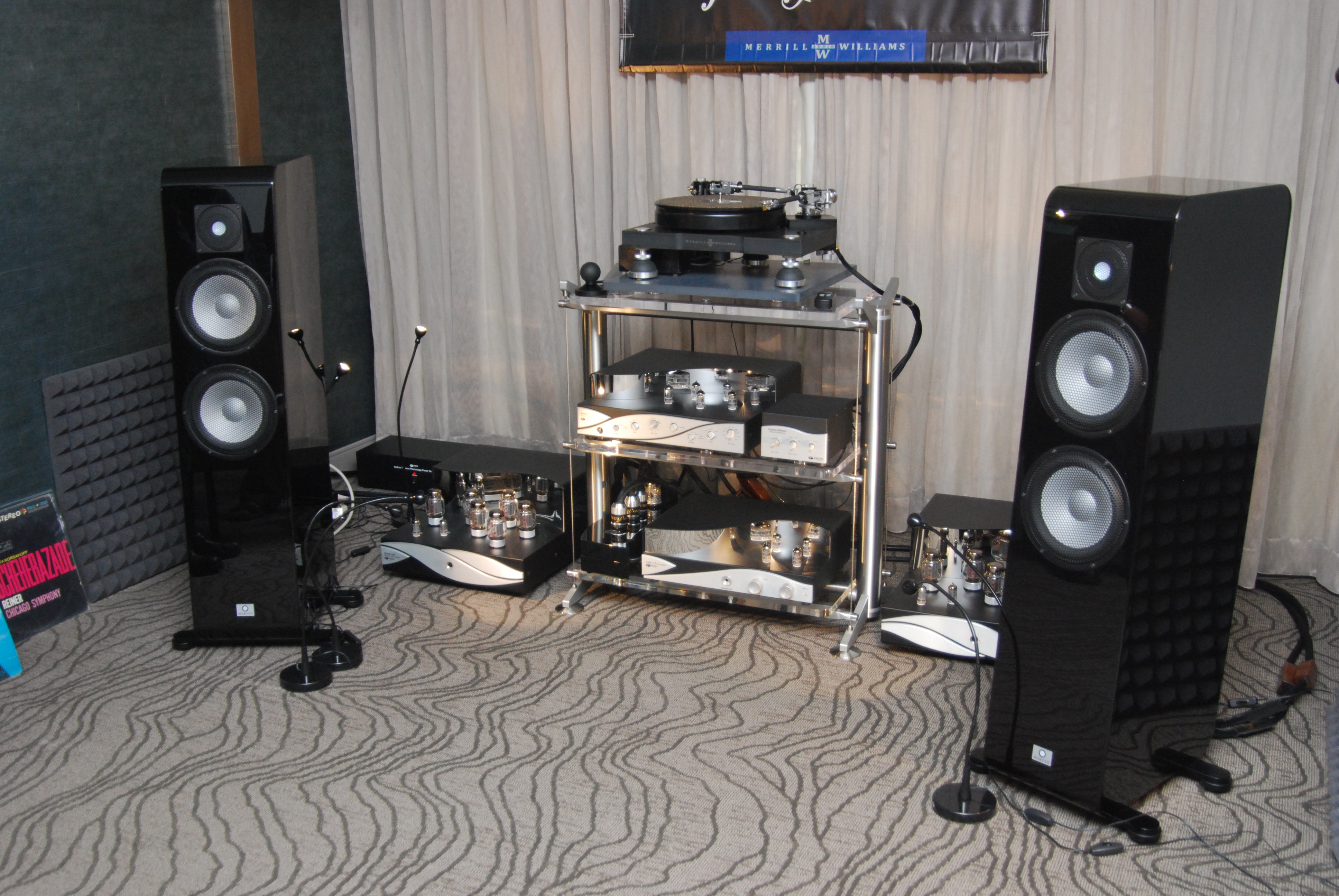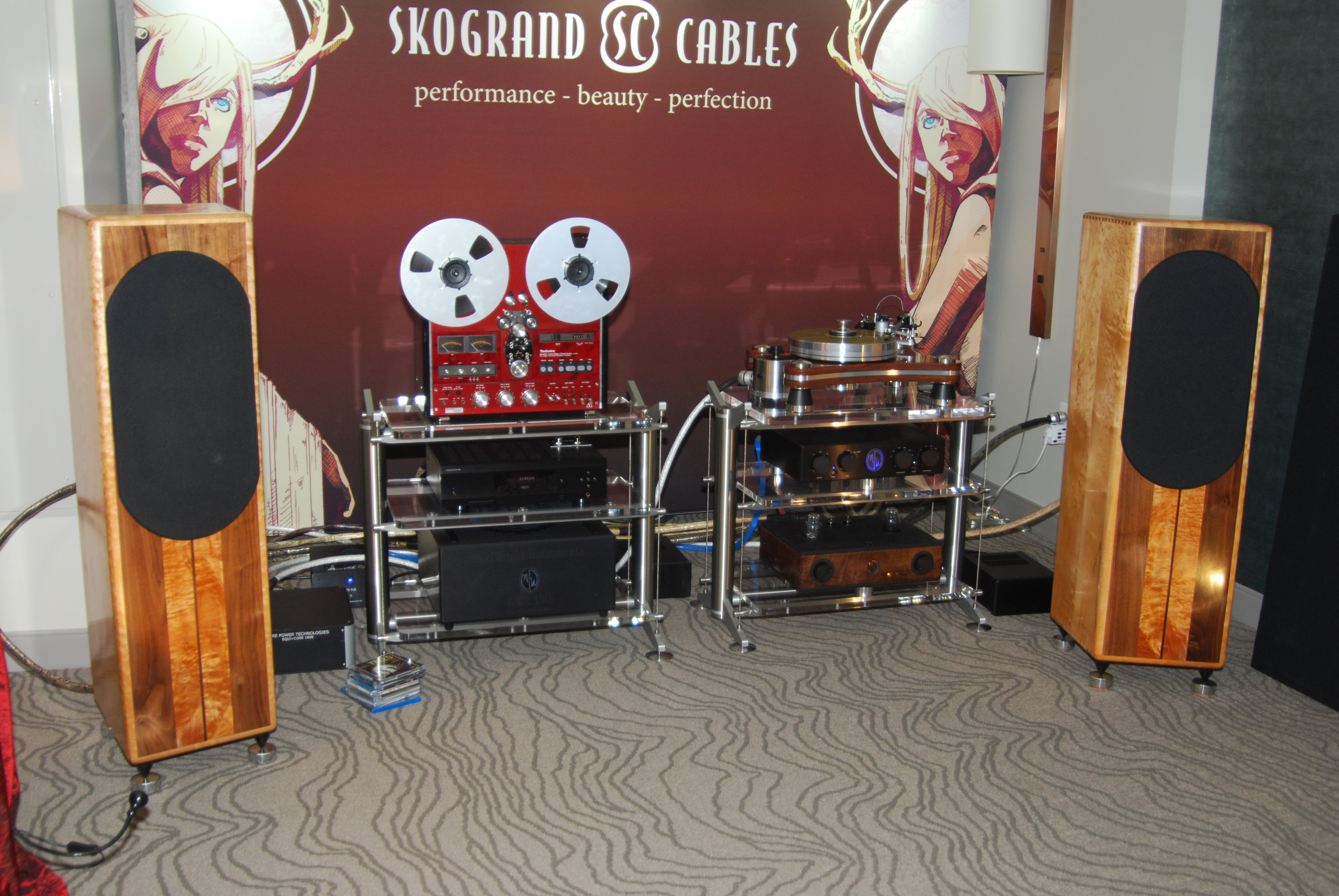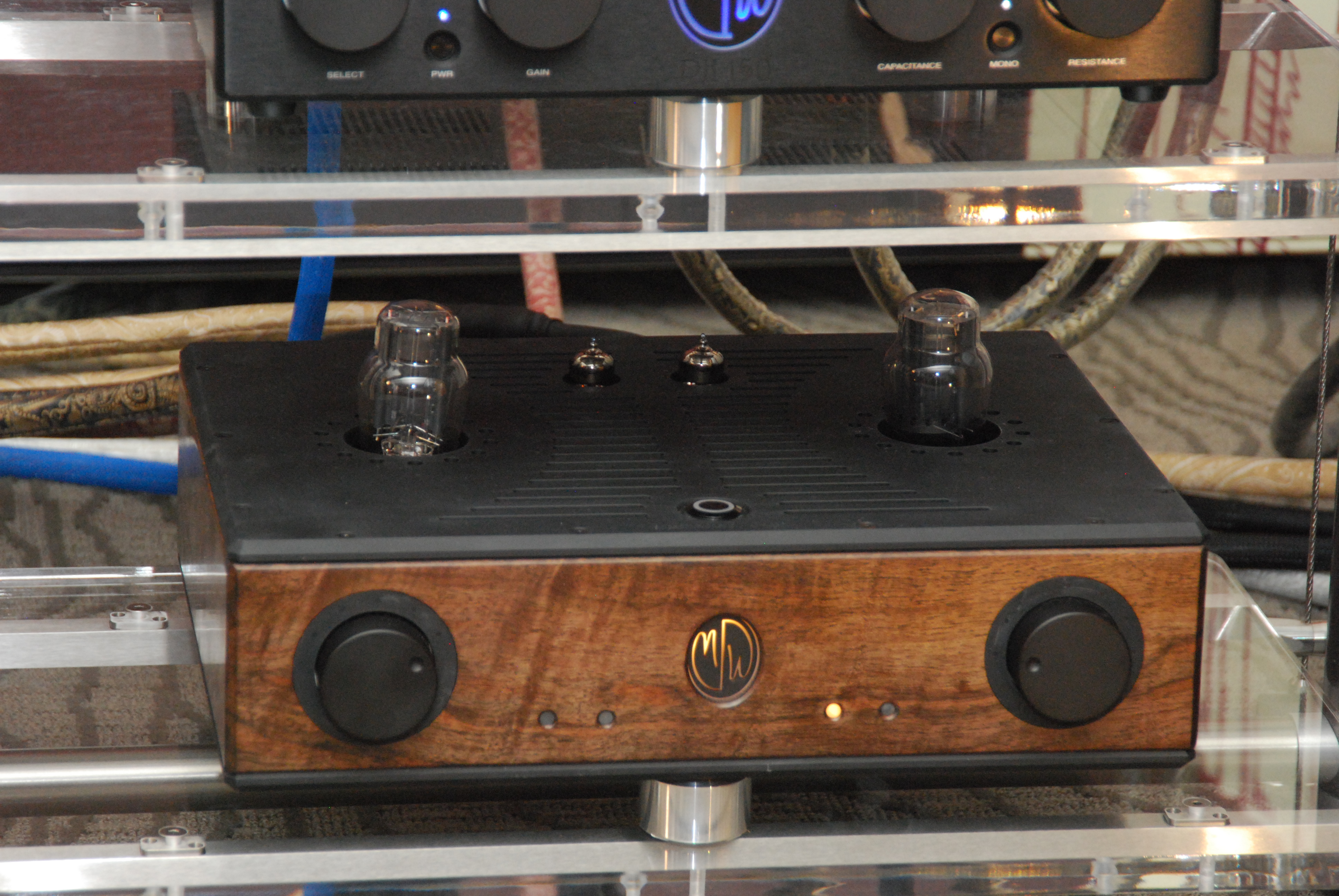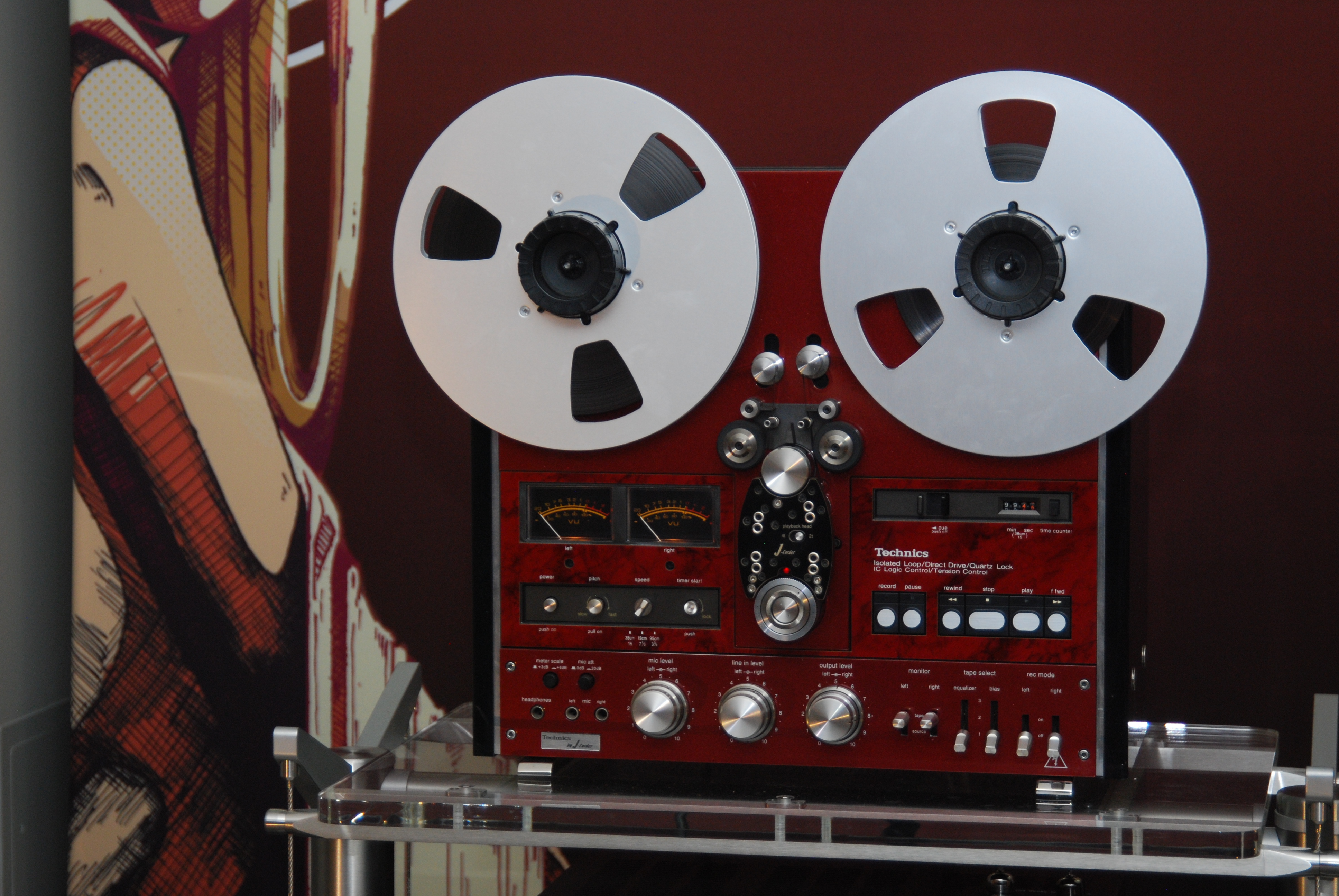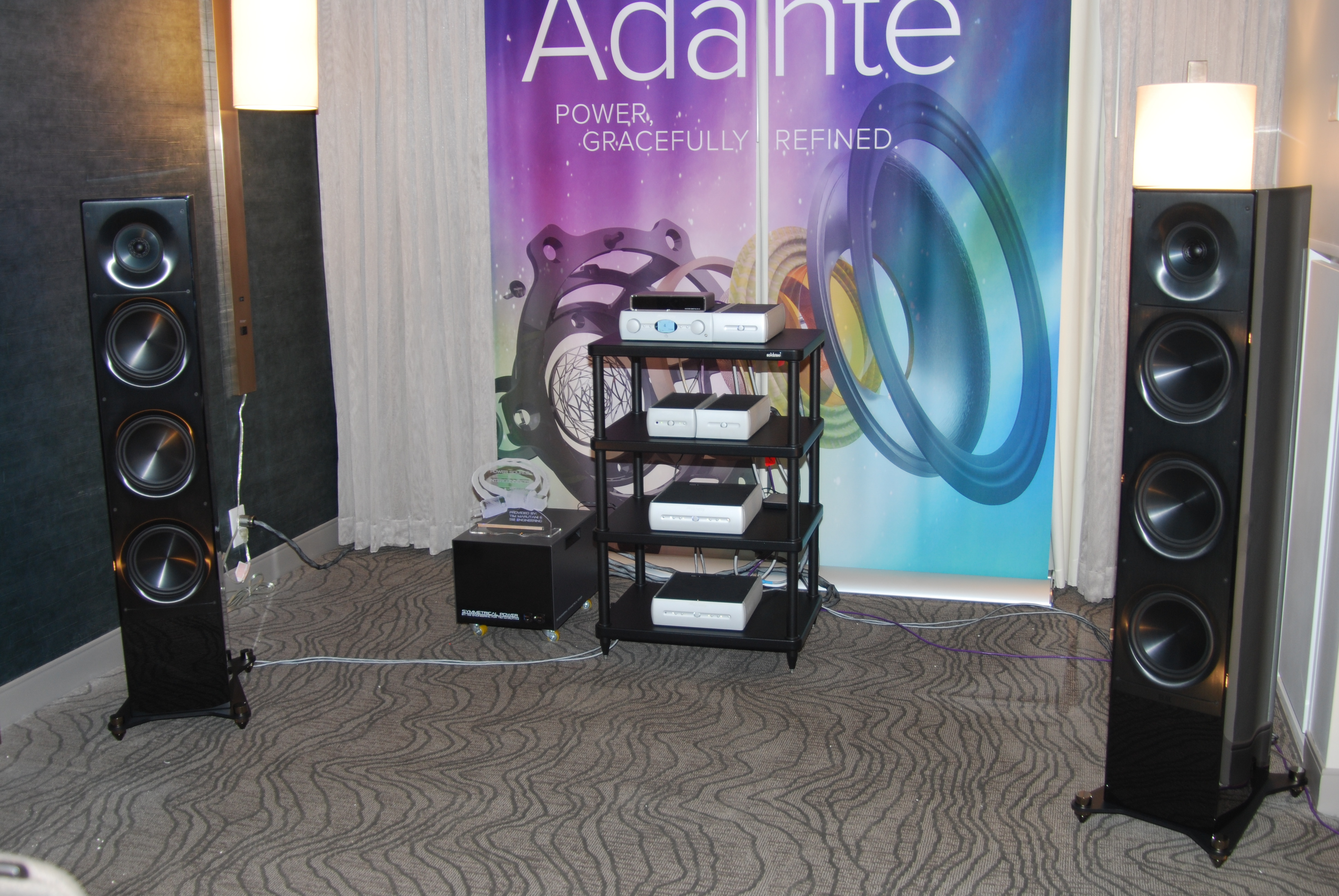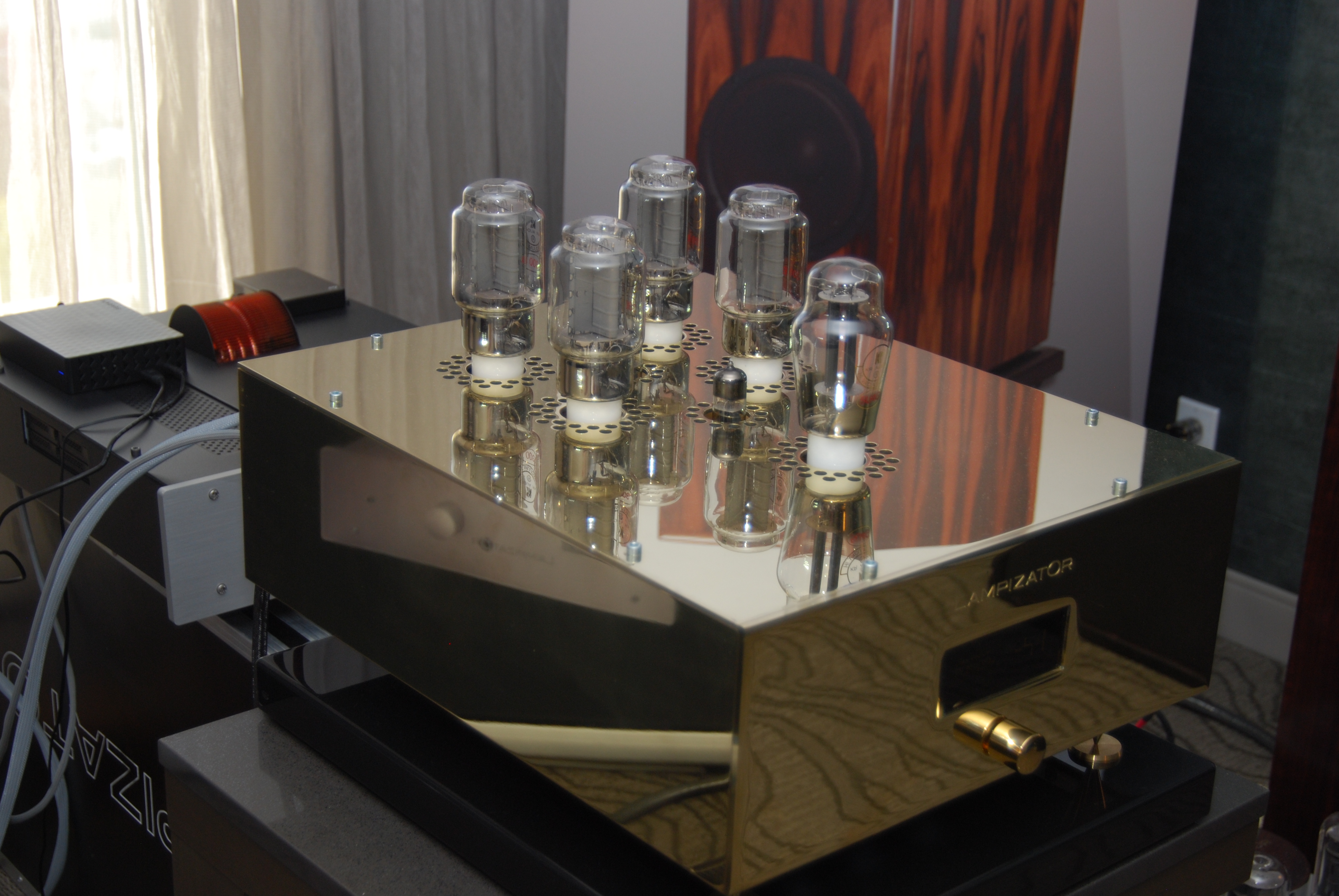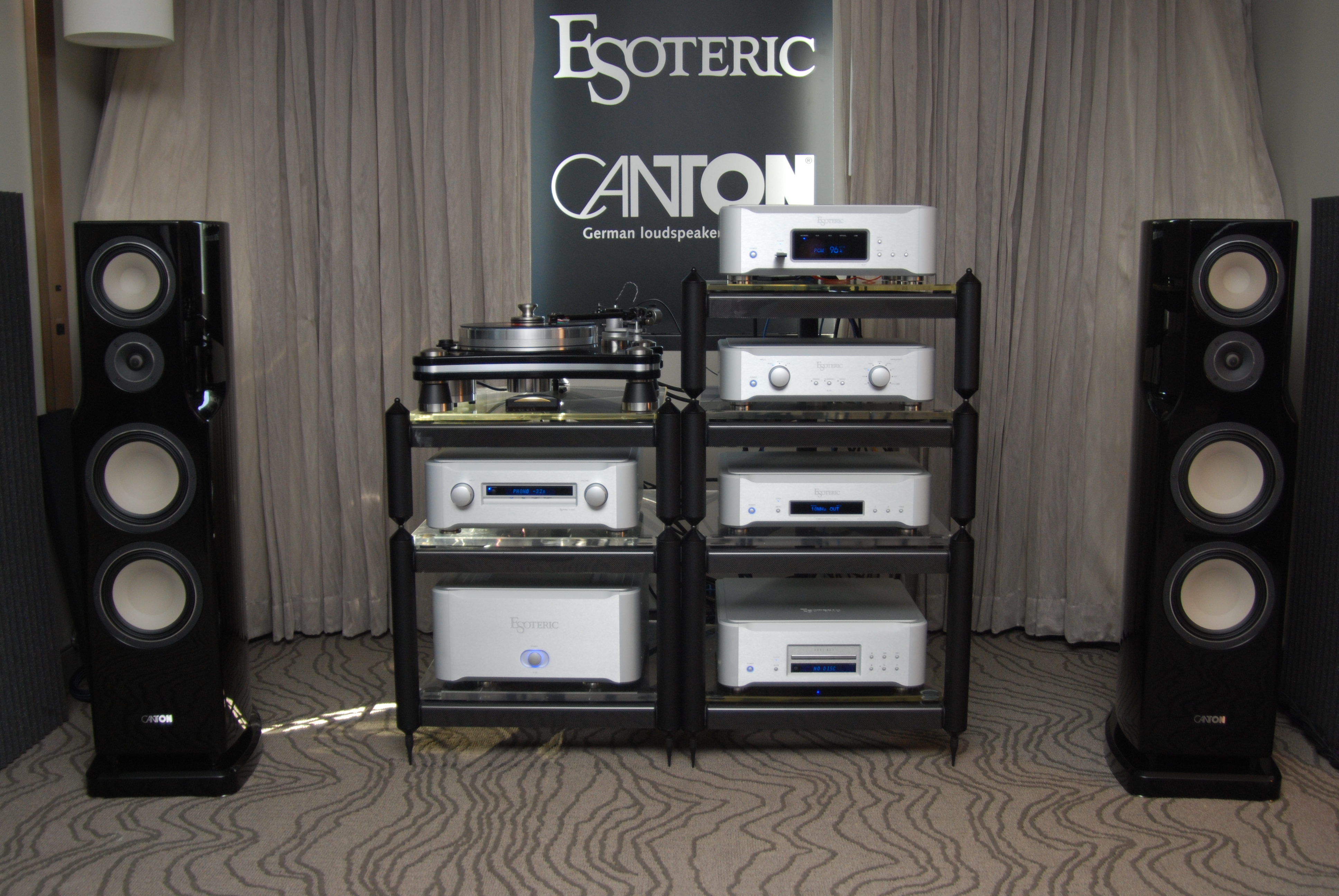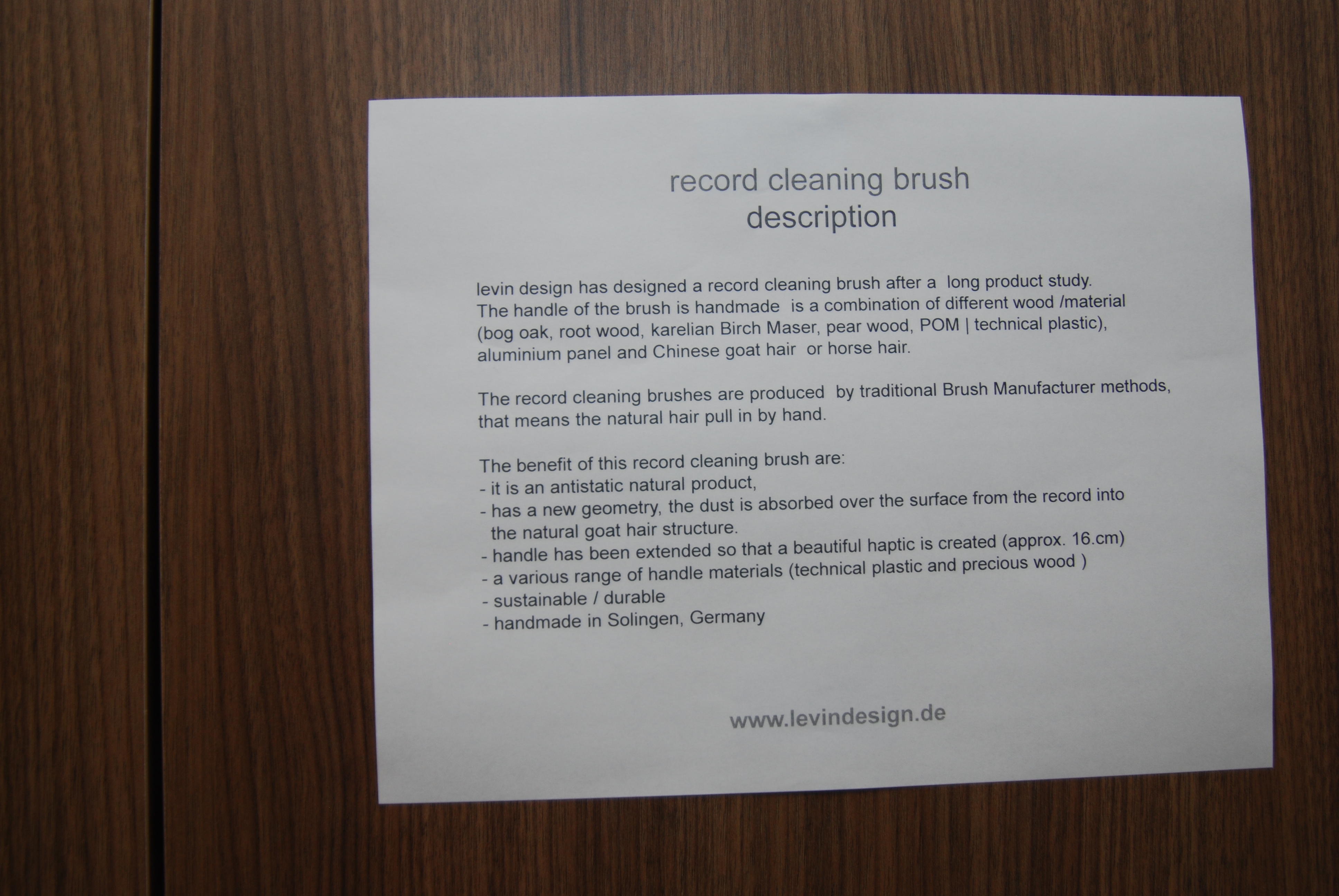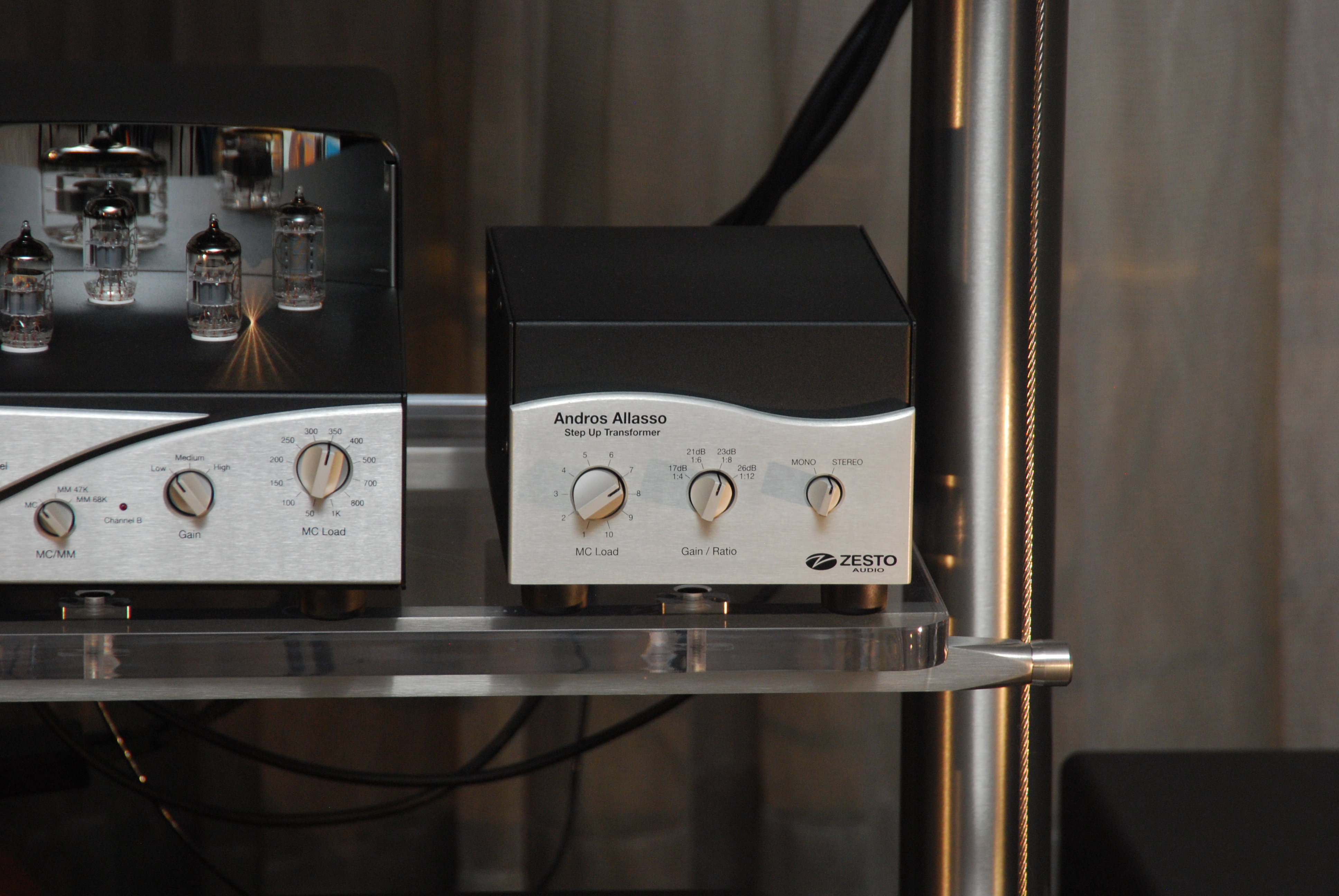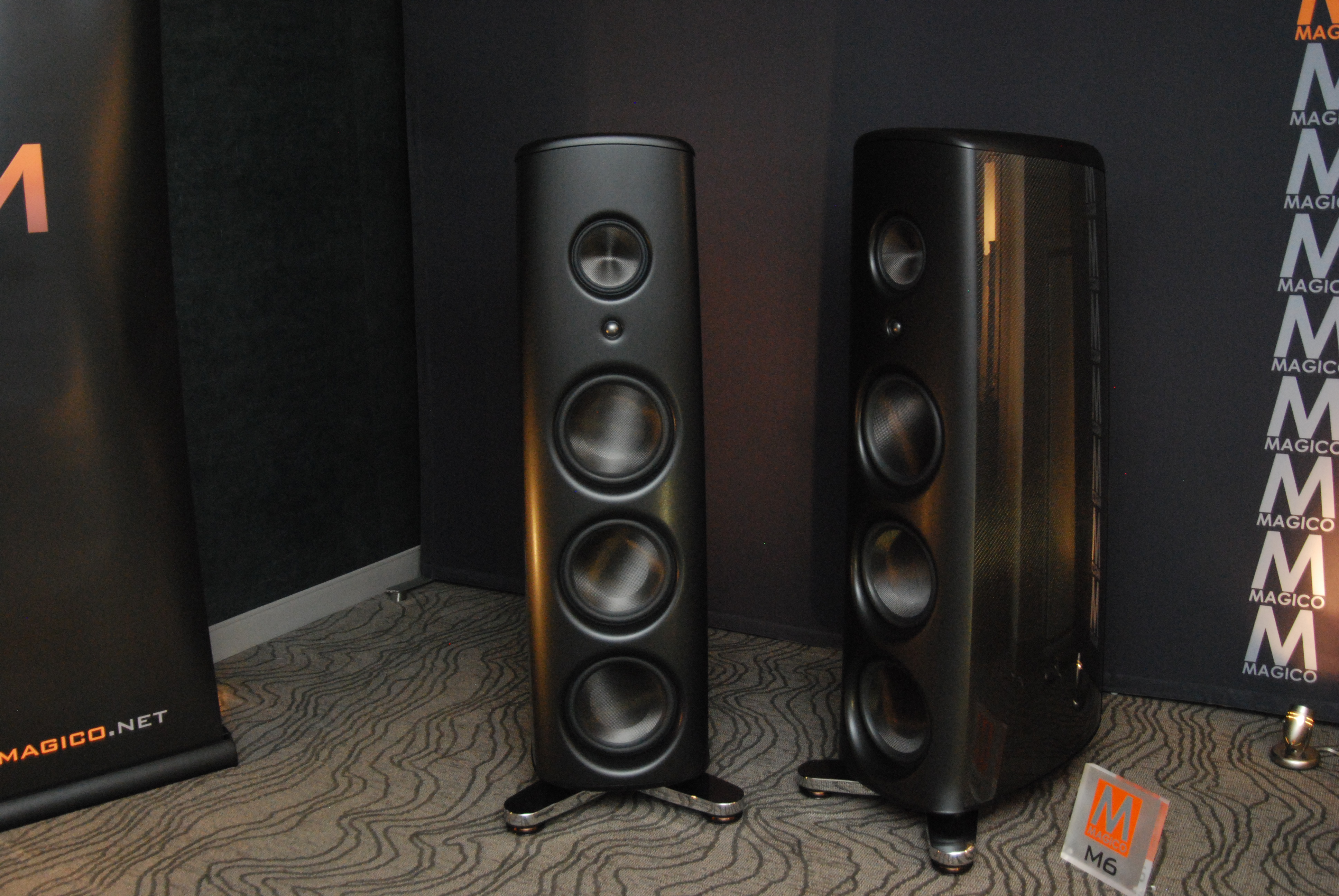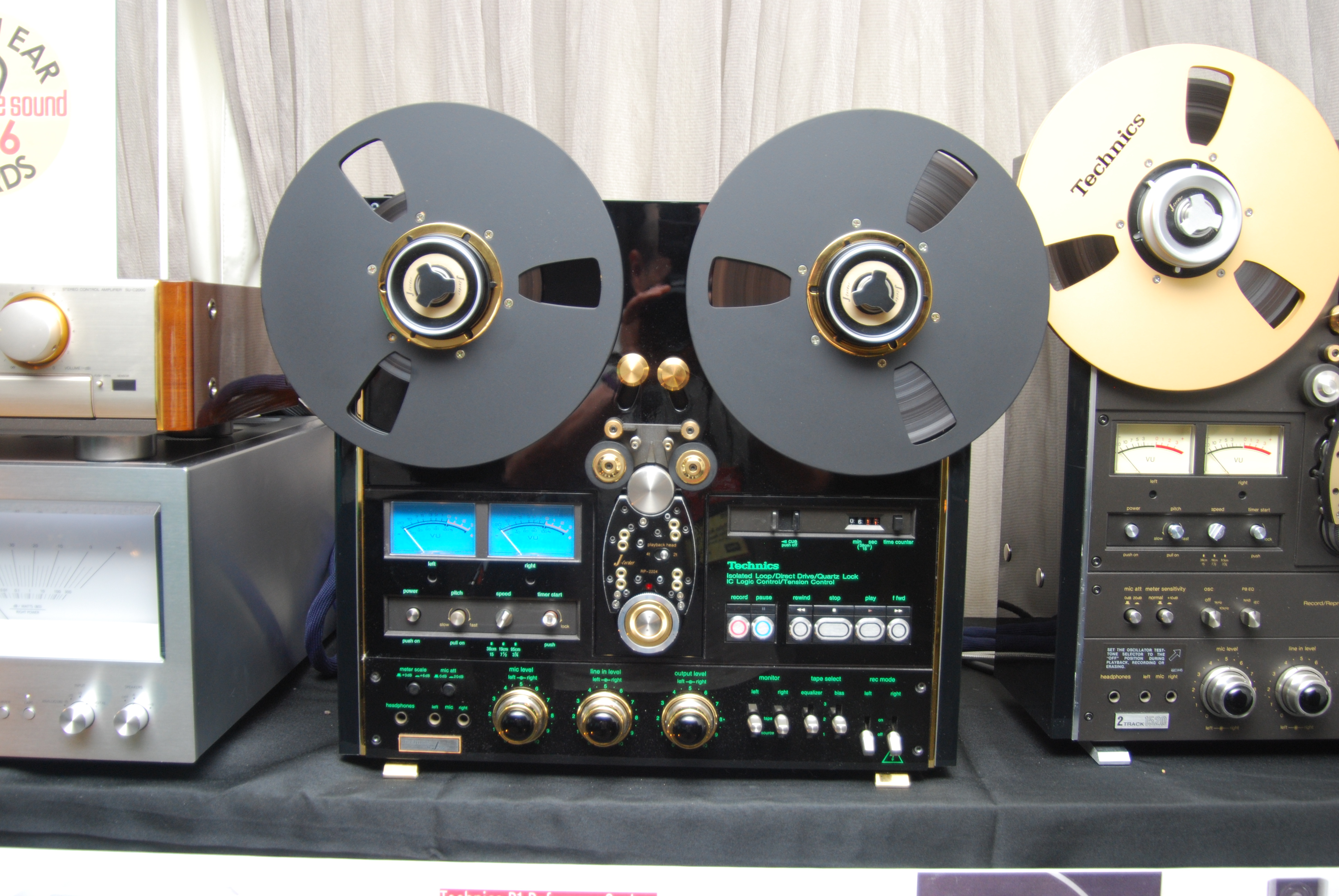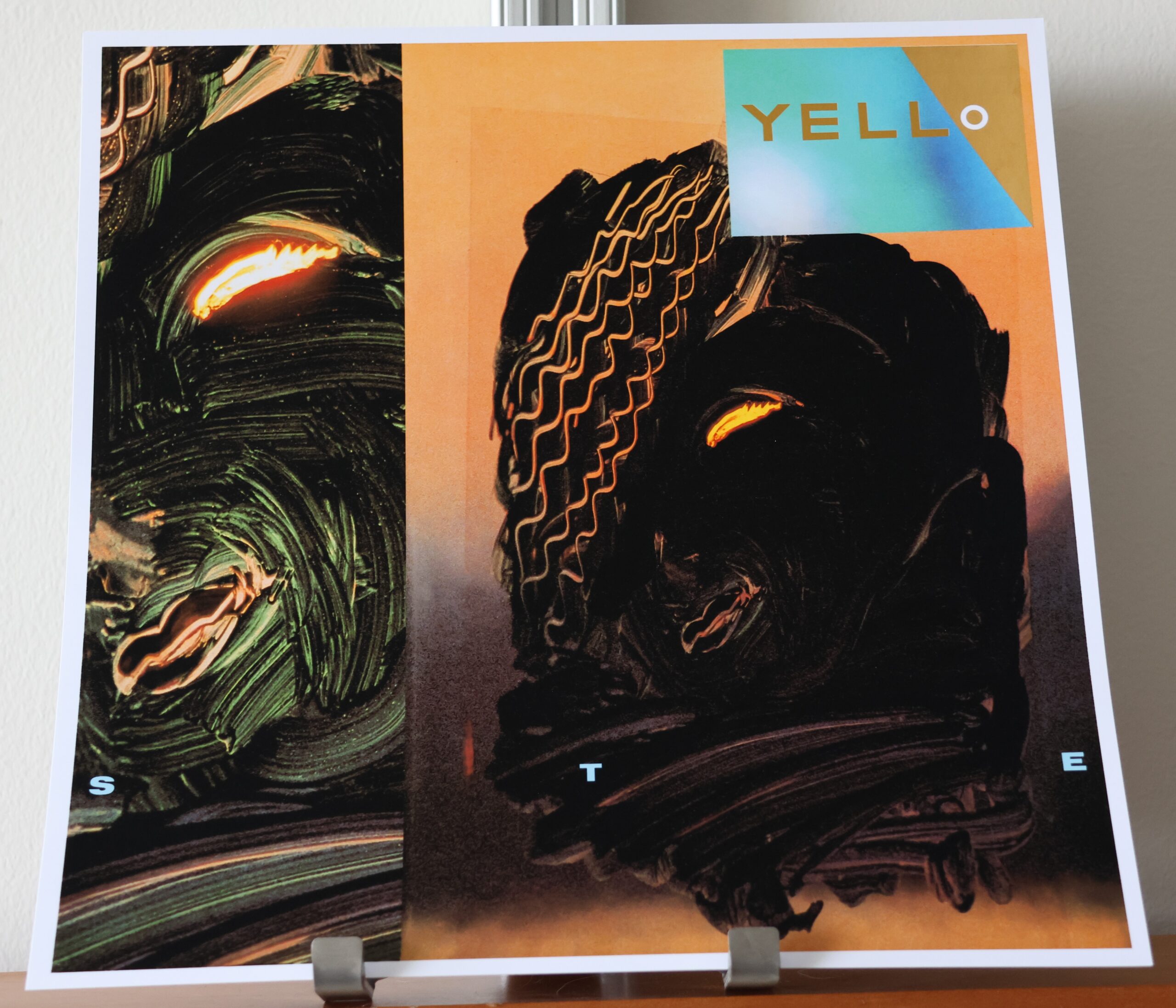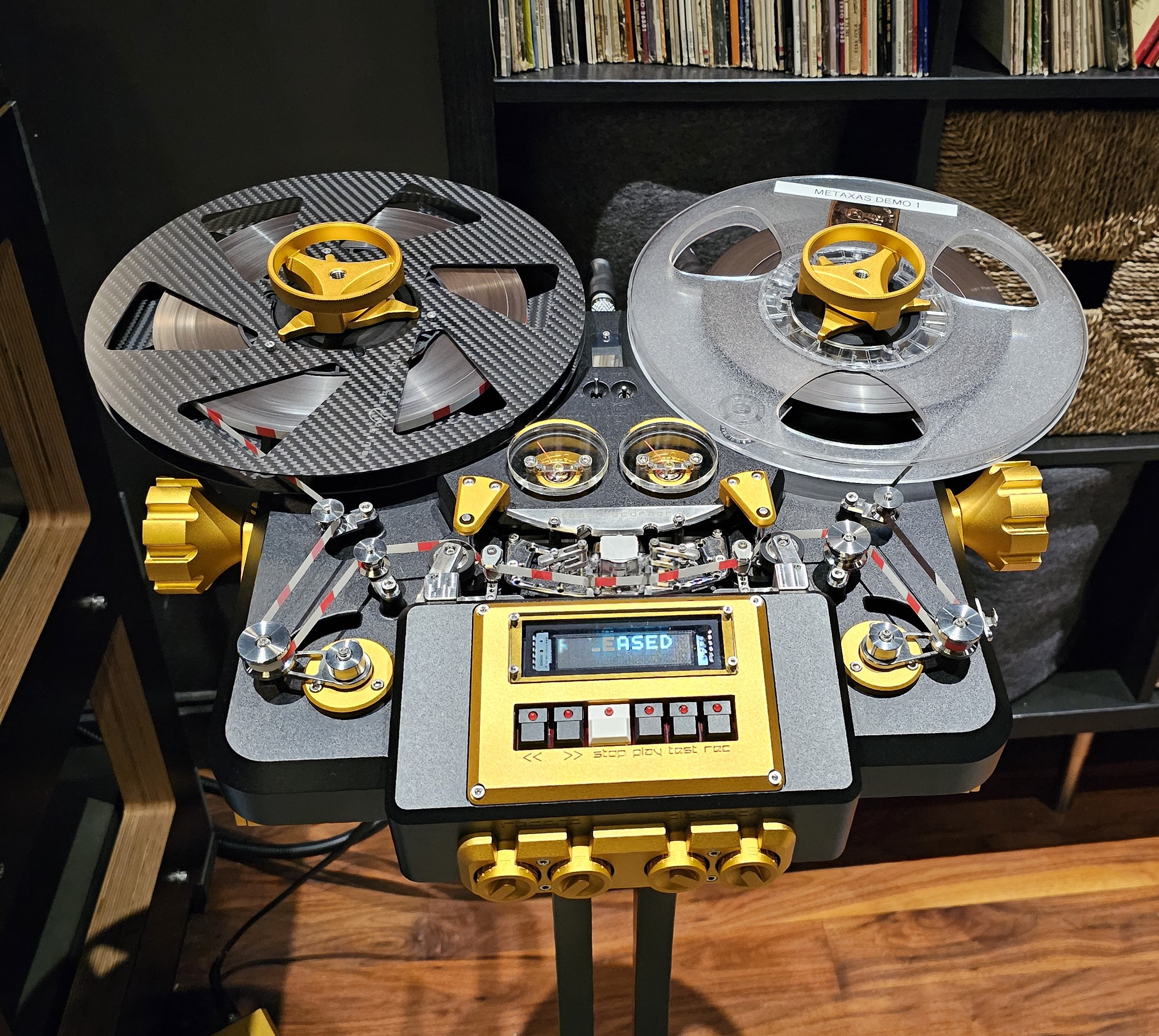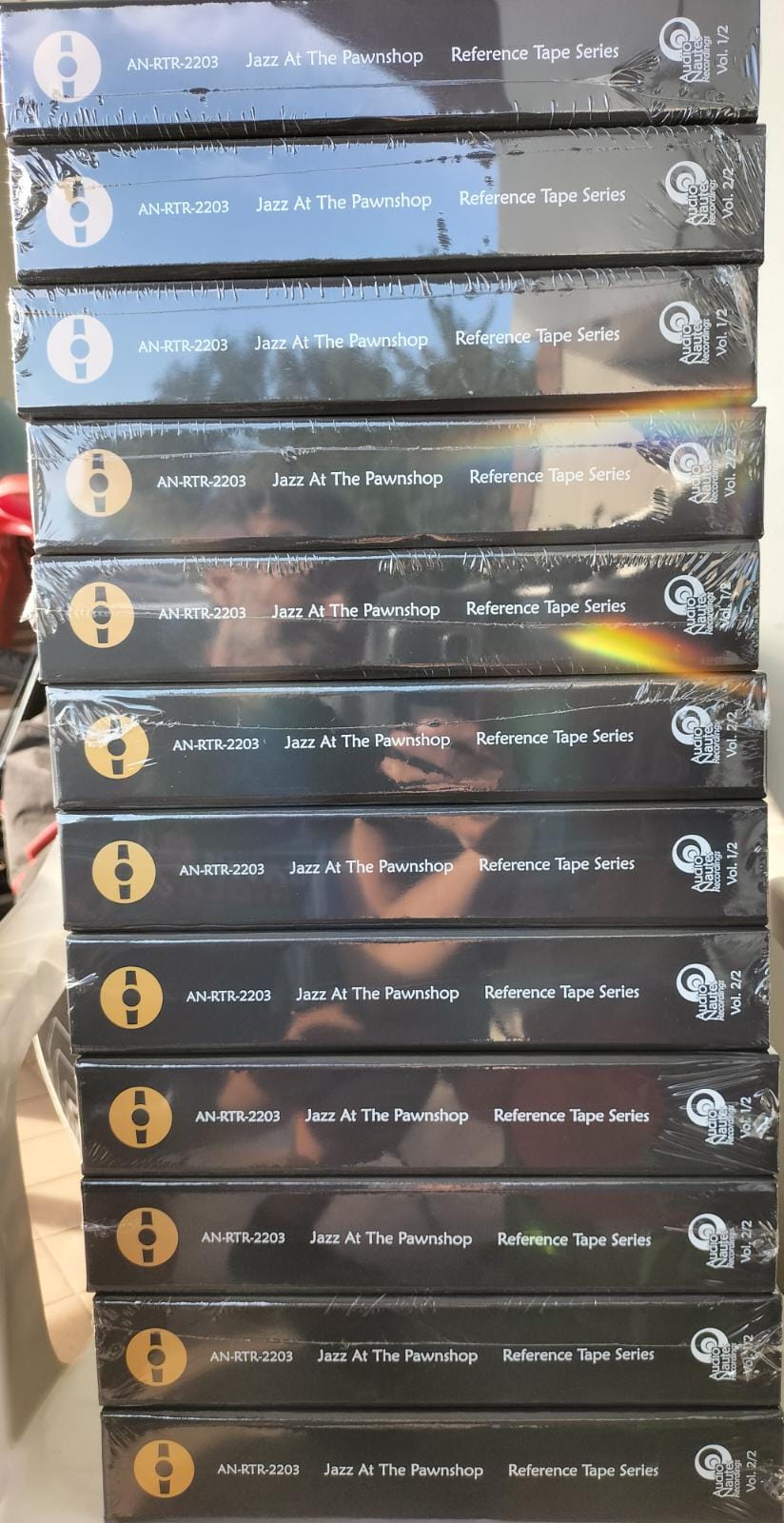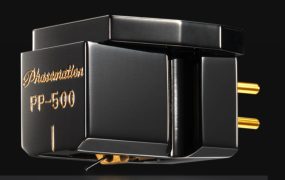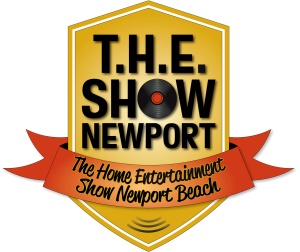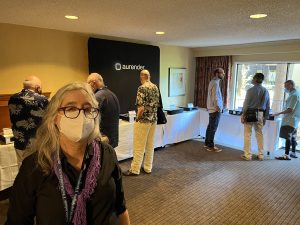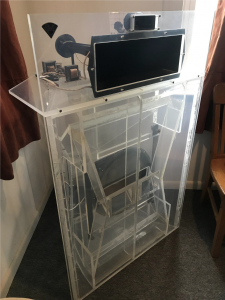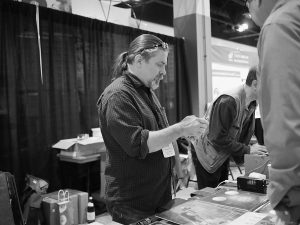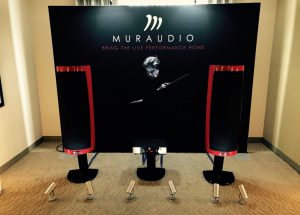At last! The construction that plagued last year's Rocky Mountain Audiofest is history and the show is back to normal. Improved sleeping rooms. Much larger restaurant with the same amount of help. The same nice friendly staff. The Marriot's tower section packed with audio equipment of all shapes and sizes from the Mezzanine to the 11th floor (plus the 5th floor of the atrium).
Exhibitor turnout for whatever the reason was slightly down this year. Still, many audio shows would die for this number of exhibit rooms. There's absolutely no way one audiophile or reviewer—note the number of magazines that send multiple staffers to the show—can cover RMAF. Not even if you are 25 years old and sprinting between rooms and up and down the stairwells! Even with the slightly expanded hours. (Carol and I do our best to get into the vast majority of rooms—to at least take some images and reports of what was there—but Myles is spot on, way too much to do a complete and thorough coverage for any one person - Dave Clark) And yet despite the size of the show, I remain puzzled why this show's attendance is the weakest of all the major US shows and seemed very slow this year.
Nor was I—a veteran of many a RMAF show—under any delusions about covering the entire show for Positive Feedback. Especially if you want to do anything more than run like a madman from room-to-room and snap photos. And lousy ones at that. Or catch up with people who you haven't seen since the last show. Or actually listen to and learn about the equipment being demonstrated. Thus, there may have been some rooms that missed or didn't have time to follow up on more than once during the show.
Instead my primarily focus was covering rooms with turntables or reel-to-reel tape decks. There were plenty of those too. Long gone are those dark days where the number of rooms with turntables could be counted on one hand. Add to that the number of rooms now sporting reel-to-reel tape decks led by United Home Audio's supercharged Ultima 2 deck (in the Classic Audio and Atma-sphere room), a Nagra-T plus Doshi Audio V3.0 tapestage (Nagra, Kronos, and Wilson Audio room), a Studer A810 outfitted with Flux Magnetic heads plus Doshi V3.0 tapestage (Doshi Audio and Joseph Audio room), a Nagra IV plus King-Cello tapestage (Acoustic Sounds), a full complement of updated Technics decks (J-corder room) and many more.
Alas, talk of a new tape machine out of Japan or Europe has died down. I did have an opportunity during RMAF to chat with Technics' US rep and gauge—if any—the company's interest in re-introducing a new reel-to-reel tape deck. After all, Technics just released improved versions of their venerable direct drive turntable. The problem boils down to this. Everyone who worked on their reel-to-reel machines—in contrast to their turntables—has passed on. So Technics would have to bring someone in from the outside to design a new tape deck. Unlikely, but not impossible since one person has spoken with Technics about helping them bring out a new machine.
Some Random Audio Show Thoughts
Audiobuddy: So what rooms did you like at the show?
Me: I thought the Lirpa Gold Medal room sounded really good.
Audiobuddy: Oh, no, that room was terrible.
Me: Did you bring your own software to listen to in the room?
Audiobuddy: No.
Me: Did you get to sit in the sweet spot?
Audiobuddy: No
Then it struck me while laying in bed the night before RMAF kicked off that setting up a room at an audio show is no different than that The Food Channel network cooking show where chefs are provided the raw ingredients and tasked with coming up with a dish in twenty minutes. Lot's of ingredients. Not much time. Lots of pressure. No idea of how things will turn out. And everyone is a critic!
Truth be told, we all disagree. Conversely, audiophiles will never agree on anything either. But there's often something to be gained by comparing notes since we often miss something. Or have different priorities for home audio reproduction. Or just flat out hear differently. Not to mention we can always learn from each other and perhaps become more keenly attuned to something else.
There's something more to it, however, when two listeners experience diametrically opposite reactions to a show system. Sure, everyone has a deal breaker. But for the most part, today's top gear manufacturers aren't dummies and don't release a product until they think it's perfect or met their design requirements. Not to mention equipment manufacturers nowadays often have trusted, critical listening panel (s) that don't blow smoke up their you know what.
Now it's important to delve deeper and discover why. There's the obvious reasons beginning with the sources eg. digital vs. analog front-ends. I can't tell you how many times I've come away with two completely different reactions to a system depending on the source medium. Next, is the equipment broken in? (I can't understand for the life of me why Nagra given their reputation—brought totally new, unbroken-in gear to this years' show.) Then, there's the question of which day you heard the system with Sundays generally being the best day to listen at shows.
The biggest issue is, however, source material. I simply don't understand how attendees don't bring their own software to the show. The vast majority of exhibitors nowadays honor play requests. For those that don't, perhaps they should consider changing their policy with specific hours for attendees to come by with their own software. Maybe they'd be surprised by the amount of traffic that would attract. But when all is said and done, I simply can't understand how anyone can pass judgement on an audio system when you aren't familiar with the music being played. How do you know the issue is with the system and not the recording?
Rant over.
My Trusted Quintet of LPs
Before getting to the Best sounds at RMAF, a little on the LPs (excluding one sampler tape from Jonathan Horwich of IPI) that I brought to RMAF and why they were selected. Above all, I wanted to choose albums that were sonic spectaculars, spanned different musical genres and were great music. Most of all, I didn't want to destroy my reputation at shows! So here's a quick capsule look at those select albums.
Winds of War and Peace, "Olympic Theme," Acoustic Sounds/Wilson Audio APC 8823.
I couldn't—despite this LP being a long time resident of HP's vaunted recommended list—ever work up any enthusiasm for this album. I'm at a loss to why. Was it the half speed mastering? But the original album (as well as Centerstage) always sounded amorphous and washed out. That was until Chad's new reissue remastered by the great Kevin Gray. Kevin's remastering does away with that amorphous, blob, congealed like quality of the original release. In its stead is super large scale, marching band, Mercury Fennell type music. Bombastic with big—no make that HUGE—bass drum whacks. An ability to separate the different instruments. The albums biggest flaw? Some slightly softened upper octaves.
Grant Green: Matador, "My Favorite Things," Music Matters Jazz MMBST-84442 (33 rpm).
Monster album, monster playing, monster song, monster RVG recording. Oh yes. Just a few years earlier, John Coltrane and McCoy Tyner recorded the exact same song together on the album entitled My Favorite Things (Atlantic). Needless to say, Green and McCoy Tyner's performance is every bit as good musically as the earlier arrangement! This recording serves many masters. First, is it musically engaging? Do I hear the tightness of the quartet? Next, can I discriminate Green's notes as he moves up and down the scales and neck of the guitar as well as separating McCoy Tyner's playing with his left and right hand? Then does the system accurately present the tone of the instruments? What about the attack of the guitar? Lastly, can the system do Elvin Jones' drumming justice?
Andreas Vollenweider: White Winds, "The White Winds, Hall of the Stairs, The Play of the Five Balls," CBS 7464-39963-1 (original pressing)
This album ruled the roost in my system when it first came out and then for some mysterious, inexplicable reason, fell out of rotation. Then while recently shopping for albums on my shelves, I rediscovered and rekindled my relationship with this great album. Absolutely mind boggling and numbing special effects. There are just so many things going on here including but not limited to spatiality, musical nuances and low level resolution, size of the soundstage, how well the system coalesces images, how long can you hear the fade out of the female singer and does the music move you. Many a system fails the soundstaging test—take the Nagra room this year—and the recreation of the recording's cavernous sound and ethereal spatial effects. This is a life-like concert like album that shouldn't ever sound stiff or boring.
The Doors: LA Woman, "Riders on the Storm," Analogue Productions/Elektra EKS-75011, (45 rpm reissue).
Gotta bring some rock music to the show and what better than the Analogue Productions 45 rpm reissue of The Doors LA Woman? Love the music and again there's a lot of things happening with razor sharp transient attacks, playing around with Morrison's voice, soundstage size, sound of the storm and rain, Manzarek's synthesizer, etc. to keep one busy for quite a while.
Smoke and Mirrors: Vanish "Udacrep Akubrad," Yarlung Records YARLP2552-45.
Best Sound of Show
First, one caveat. My listening notes drew exclusively from listening to vinyl or tape (with the exception of two rooms). Rooms can, depending upon the source medium, exhibit Dr. Jekyll and Mr. Hyde behaviors. Not to mention, the importance of being intimately familiar with what you are listening to. Not to mention where you sit. Not to mention what day you hear the system.
Without any further ado, this year's award winners are:
1.The Audio Alternative Room 1: Vandersteen Model 7 MkII speakers ($62K), Sub Nine subwoofers ($18,900), VTL TP-6.5 signature phonostage with MC stepup (12,500), TL-7.5 Series III Reference linestage preamplifier ($25K), Siegfried Series II Reference monoblock power amplifiers ($65K), Brinkmann Balance turntable with 12.1-inch tonearm and RoNt power supply ($32,080), Lyra Atlas moving coil cartridge ($11K), AudioQuest cabling and Niagara power conditioning, HRS racks.
This room checked all the boxes for audio show sound. What impressed me the most—besides the system's ability to play big—was the system's upper octave extension. This was the only system that really captured Vollenweider's White Winds including its cavernous, ethereal sound. Same went for The Doors "Riders on the Storm" and the fiddling around with Morrison's voice at the beginning of the cut that was clear as a Denver fall day.
There's also a take home message here. I can't ever remember ever hearing a Vandersteen speaker sound bad at a show pointing to their ability to work in many different environments or audiophile's listening rooms.
2. The Voice That Is: Tidal Audio Akira speakers in midnight black gloss ($215K), Tidal Audio Presencio Reference preamplifier ($77,600), Tidal Audio Ferios amplifier ($67,900), Tidal Audio Reference Cables, TW-Acustic Raven Anniversary table ($22K) with TW-Acustic Raven 10.5 tonearm ($5500), Transfiguration Proteus Mk. 2 moving coil cartridge ($6000), Signal Project PLC.
First some trivia. Doug White took his name company, The Voice That Is, from the Johnny Hartman Impulse album of the same name. So anyone using this jazz album can't be all bad.
The Tidal room was another really great system capable of stunning see through transparency. Where the system really excelled, however, was its ability to capture both the music's nuances and rhythm's and at the same time sound absolutely effortless on "My Favorite Things."
The latest version of Transfiguration Proteus cartridge also sounded better than the original version that I reviewed a while back in Positive-Feedback. Specifically, the midrange of the new Proteus was far more palpable while retaining the original versions resolution.
3. The Audio Alternative Room 2: Martin-Logan Neolith speakers ($80K), Audio Research Reference 6 linestage ($14K), Audio Research Reference Phono 3 phonostage ($14K), ARC Ref 750 amplifiers ($66K), Turntable 1 (Clearaudio Master Innovation table ($29,400) with TT1-MI tangential arm ($32,350), Olympus turntable stand ($13,400), Goldfinger Statement moving coil cartridge ($15K), Turntable 2 (AMG Giro with 9W2 tonearm ($10K), DS Audio DS002 optical phono cartridge and EQ ($5K), Turntable 3 (Clearaudio Concept Black w/Satisfy arm ($1800)/Hana SL moving coil cartridge ($750)/Musical Surroundings Super Nova III phonostage ($5K), MIT Cables, HRS racks.
This is the absolute best the Neoliths have sounded at an audio show. Martin-Logans like, based on my long time experience, power and there's nothing like Audio Research's Reference 750's 750 wpc of tube power here driving these hybrids. Yes, there's still a touch of difference between the woofers and stat panel; but oh the speed and resolution on Grant Green's guitar. And harmonic overtones. Extremely solid sounding and very transparent with LPs played back with the Clearaudio GFS. The DS Audio DS002 optical cartridge sounded much better at RMAF than at Axpona this year though still hear the tendency of the cartridge to coalesce instruments on and in the speakers and the soundstage to shrink.
4. Audio Skies/GamuT: GamuT Zodiac speakers ($149K), GamuT M250i monoblock amplifiers ($25,990/pr.), GamuT D3i Dual-Mono preamplifier ($8390), GamuT phono or R2R board for preamplifier ($1990), Pear Audio Blue Kid Thomas-Cornet 2 turntable ($7995)/external power supply ($1995)/Ortofon Cadenza Black cartridge ($2729), GamuT interconnect and speaker cables.
Ditto what said above for Neoliths. This was the first audio show where the GamuT speakers and system didn't sound bright to me. (plus there was an opportunity on Saturday night for some extended listening to tape and LP!) Different room, different setup, etc. Though there might have been a touch too much bass relative to the rest of the audio spectrum (though was tight and controlled), the system was big, effortless and un-solidstate-ish sounding. The turntable also impressed with its very solid sounding bottom end. GamuT also brought their outboard tapestage electronics that plugs directly into their linestage. All necessary calibrations will be handled by the store.
5. High Fidelity Services: Verity Audio: Verity Audio Lohengrin IIs speakers ($133K), Verity Audio Monsalvat PRE2 preamplifier/DAC ($35K), Monsalvat AMP 60 ($58K), Monsalvat PRE2 with Melco N1ZH Mk.2 source ($39,995), TW-Acustic Phono preamplifier ($18K), TW-Acustic AC Anniversary with Black Night upgrade and 2-TW 10.5 arms ($47K)/Ortofon A95 ($6500). Signal Projects cabling.
This huge room that brought the Thrax system last year to its knees didn't faze these big speakers from Verity Audio. An absolutely huge soundstage that didn't exaggerate the size of instruments. Interestingly, despite the extreme speaker spread, there was never a loss of center image. In fact, the piano on Grant Green's Matador had a very realistic size. What prevented the system from just be a bit further up the list was a slight loss of low level information and harmonic completeness. Oh, that 60 wpc Monsalvat amplifier is a brute.
6. Constellation Audio: Wilson Audio Alexia Series 2 speakers ($58K), Constellation Audio Perseus phono preamplifier ($32K) plus DC Filter ($6K), Constellation Audio Virgo III preamplifier ($32K) plus DC Filter ($6K), Constellation Audio Centaur II monoblock amplifiers ($80K), Continuum Audio Labs Obsidian Table ($35K) plus Viper tonearm ($10K) and Ortofon A95 ($7000), Transparent Audio XL cabling, Artesania rack.
Hands down the best I've ever heard Constellation at a show. Not coincidentally, this was also the first time that I heard the Constellation gear with an analog, not digital source. Dr. Jekyll and Mr. Hyde effect here? Very powerful kick ass dynamic bottom end on the Alexia 2s. Very good staging and imaging. The one thing that knocked the system down in the ranking was an ever so slight loss of transparency. Not to denigrate the sound of the Ortofon A95 (I gave it quite a favorable review last year) but the system just deserved it bit better cartridge to really show the system off. There was just a slight haze that never seemed to burn off and never felt the openness and see through quality of the better systems here.
7. Joseph Audio/Doshi Audio: Pearl 3 speakers ($31,500), Doshi Audio V3.0 mono block amplifiers ($32,900/pr), Doshi Audio V3.0 preamplifier ($16,900), Doshi Audio V3.0 tapestage ($16,900). Fully rebuilt, recapped with new low inductance Flux Magnetic heads Studer 810, Cardas cables.
Here's a match made in heaven. Tubes, state-of-the art 15 ips reel-to-reel tape and Joseph Audio speakers. Pearl 3s in a stunning white finish. First room on the list with a "real" tape machine. One of the most musically engaging systems at the show. Talk about palpable midrange and uncanny midrange tone. Big stage and the speakers just disappear into the ether. Check out the sexy new, red, $100 Feinwerktechnik take-up reel from Austria and being imported by Brian Tucker of Pro Audio Ltd ([email protected]) in Chicago on the Studer too! What's not to love?
8. Zesto Audio: Marten Django L speakers ($9000), Zesto Audio Andros Tessera vacuum tube phonostage ($12K), Allasso stepup transformer ($2995), Leto 1.5 vacuum tube preamplifier ($7500), Eros 300 monoblock Class A power amplifiers ($19,900/pr), Merrill Williams Audio REAL 101.2 turntable ($7200)/Triplanar U2 (classic 10-inch) tonearm ($7200)/Benz Micro Gullwing SLR MC cartridge ($3600), Fono Acustica cabling.
The beauty of an all tube—not hybrid—based system is rare nowadays and often forgotten. Then something comes along like the Zesto Audio room. There's just a magic that tubes bring to the music. Not to mention harmonic completeness, information and life. You heard it all here and then some. One complaint though—and it wasn't the first time I've experienced this—was these Marten speakers just play and sound small.
George Counnas was also showing off his newly released Allasso step-up transformer.The Allasso comes with four different gain setting and four different voltage settings. Forty different loading setting in mono and stereo that speaks to the unit's flexibility and ability to match a wide variety of different cartridges
9. Daedulus: Daedalus Audio Apollo speakers, ModWright KWA 150SE Signature Edition power amplifier ($8995), Ambrose One dual mono tube preamplifier ($11,995), PH 150 Reference Tube phonostage ($7900), VPI Signature Prime Rosewood (), Soundsmith Hyperion cartridge ($), J-Corder Technics RS 1500 Ruby Red ($9750). Skogrand Vivaldi cables, Stillpoints rack.
The Daedulus speakers would get a vote for most improved sound. Up to now, they always struck me as a pleasant, polite though not highly resolving transducer. No, not the latest Apollo. This speaker is much more resolving while at the same time maintaining the speaker's mellowness aka lack of artificiality. Also, how sexy is that j-Corder Technics deck? Sounded pretty good too.
A Few Interesting rollouts and updates
ELAC Andante AF-61 speakers ($5000) and Lampizator Pacific DAC Balanced and Preamplifier (28,000 Euros)
Two peas in a pod. I would have like to hear Andrew Jones' newest upmarket speakers with different electronics and Lukasz Fikus' new upscale (how far have the looks of the Lampizator DACs come since the early pedestrian efforts!) DAC with different speakers. Too bad the two products couldn't have been combined.
Convergent Audio JL7 monoblock amplifiers with KT150 output tubes ($34,900)
These amplifiers just seemed so much more open than have come to expect from Ken Stevens designs. An improvement that I associate, correctly or incorrectly, with the sound of the KT150 output tube. (or maybe with a contribution from Ken's new Black Path capacitors.)
Esoteric Audio E-02 Balanced phonostage preamplifier ($9500)
An intriguing new phonostage with multiple inputs (2X balanced and 2X single-ended) and balanced and single-ended outputs. Would have liked to hear with different speakers.
Levin Audio Record Cleaning Brushes
Loved the look and feel of these new record and stylus cleaning brushes imported by Michael Vamos and Audio Skies. Looks like they would sweep the biggest cat hairs off the surface of the LP!
Show Summary
Best New Product: Zesto Allasso step-up transformer.
Product I would like Most to Bring Home: Schroder LT Tonearm.
Biggest Disappointment: Not being able to hear Magico's hot new M6 speakers ($172,000) because the Hyatt took their room away at the last moment! I will, hopefully, be able to report on their sound by the end of this year.
Coolest Modification
j-Corder modded Technics RS1500 for McIntosh equipment owners. Those blue lights were real sexy!






